Among the most beautiful travel destinations in winter, there is one place with stunning aesthetics that is often overlooked. It is the land of deities closest to the sky, where faith is omnipresent. Here, you can experience the freedom of the snow-capped mountains, with five peaks over 8,000 meters lined up like a wall, presenting an eternal panorama at a glance. There’s also blue ice that rivals that of Lake Baikal, where the ice blue layers and glaciers create a dreamlike spectacle.
Now, can you guess which place this is?
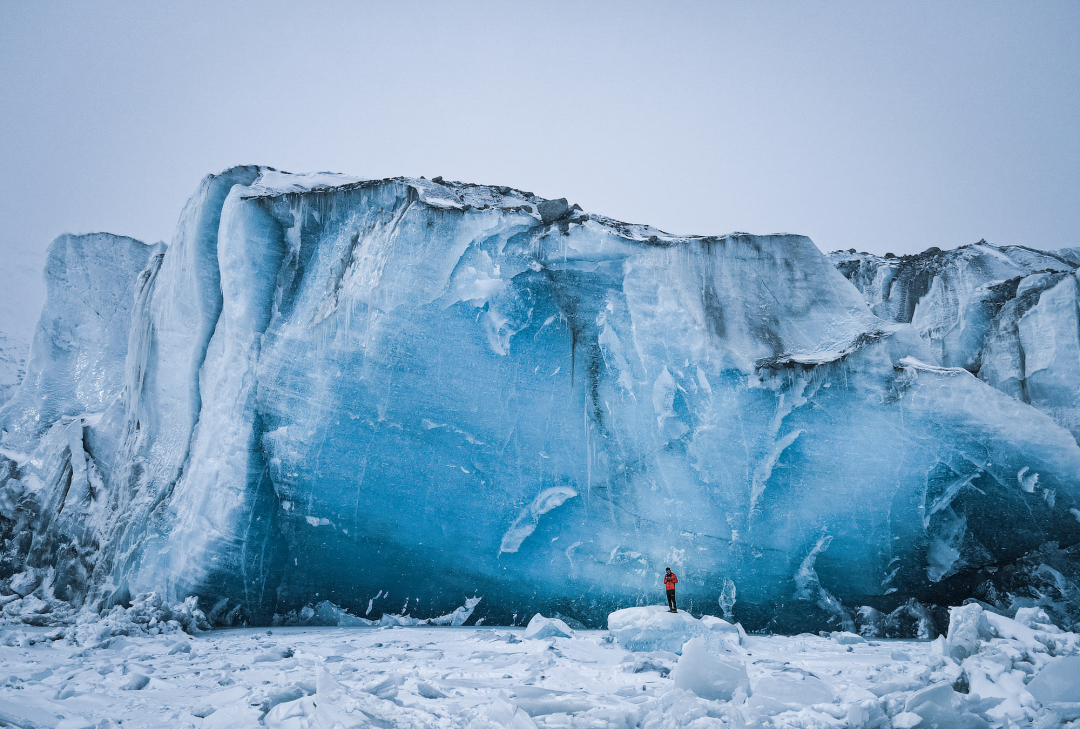
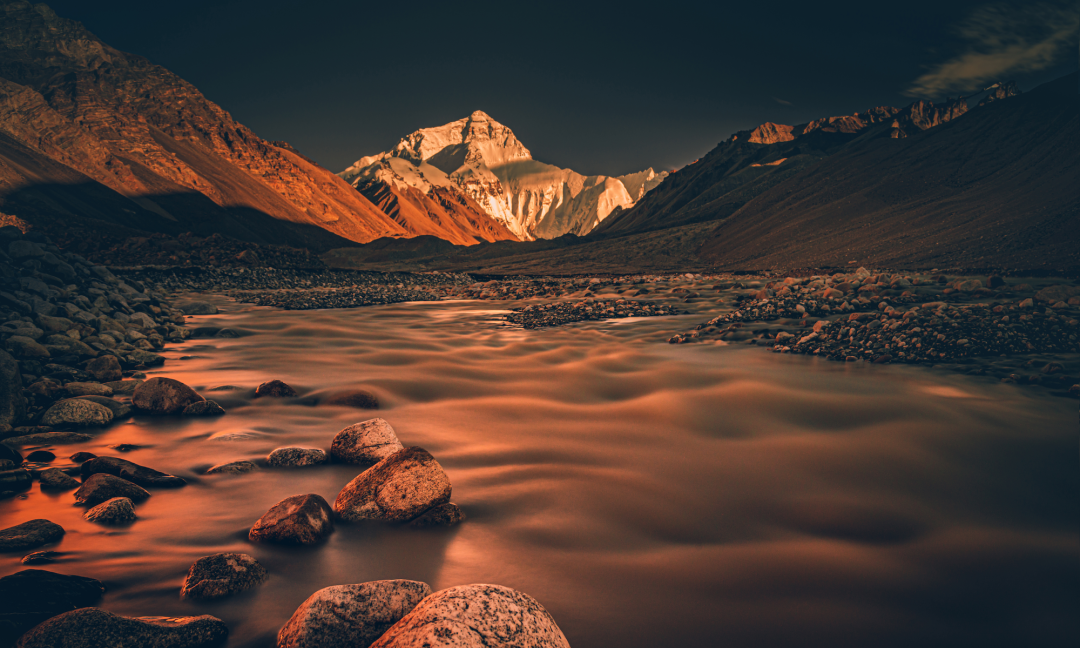
I believe many can guess the answer: Tibet!
Winter may not be the conventional travel season for Tibet, but I find its winter charm to be one-of-a-kind. The scenic beauty of the Tibetan region in winter is exceptional and attracts fewer tourists, enhancing the overall experience. Furthermore, recent years have seen the implementation of the “Winter Tourism in Tibet” policy, which allows free admission to all Grade A scenic spots (excluding temples) between November 1, 2023, and March 15, 2024. With hotel and flight prices dropping to off-peak rates during this period, the cost-effectiveness is extraordinarily high.
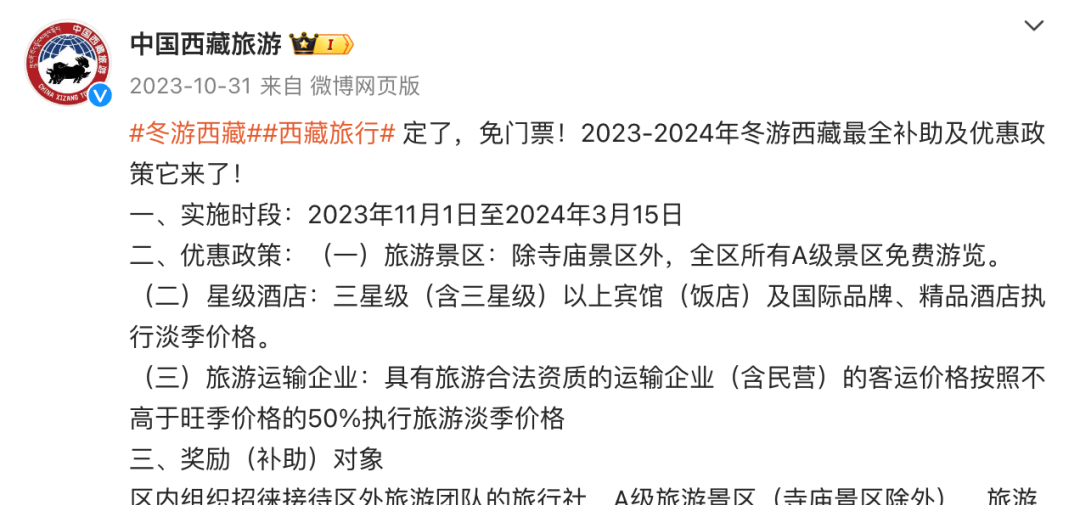
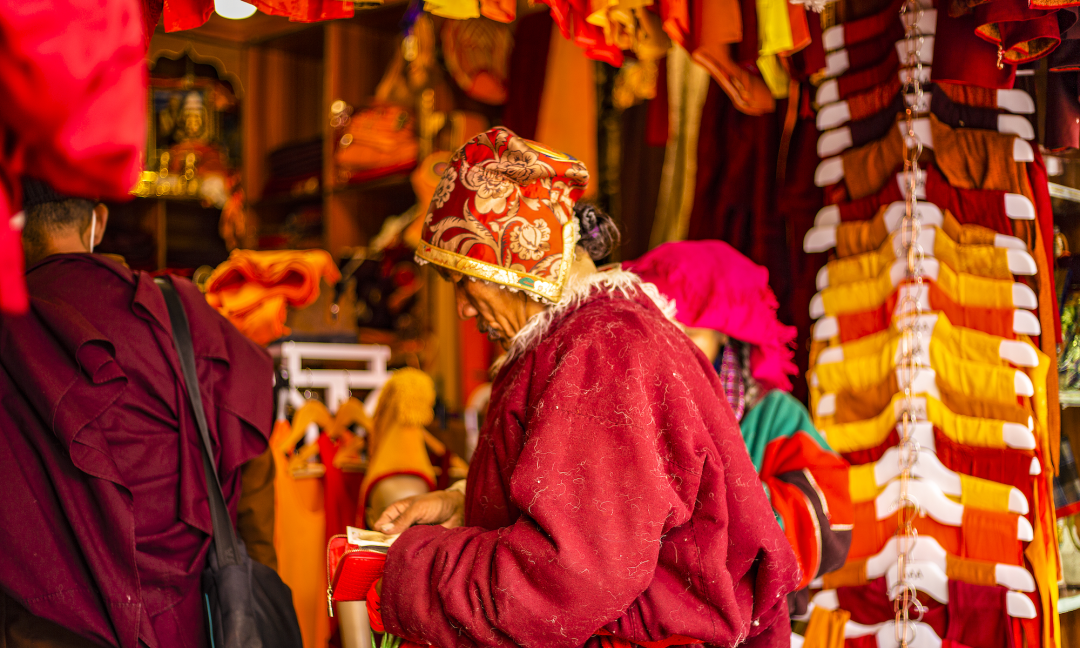
Today’s article presents a comprehensive guide to Tibet in winter.
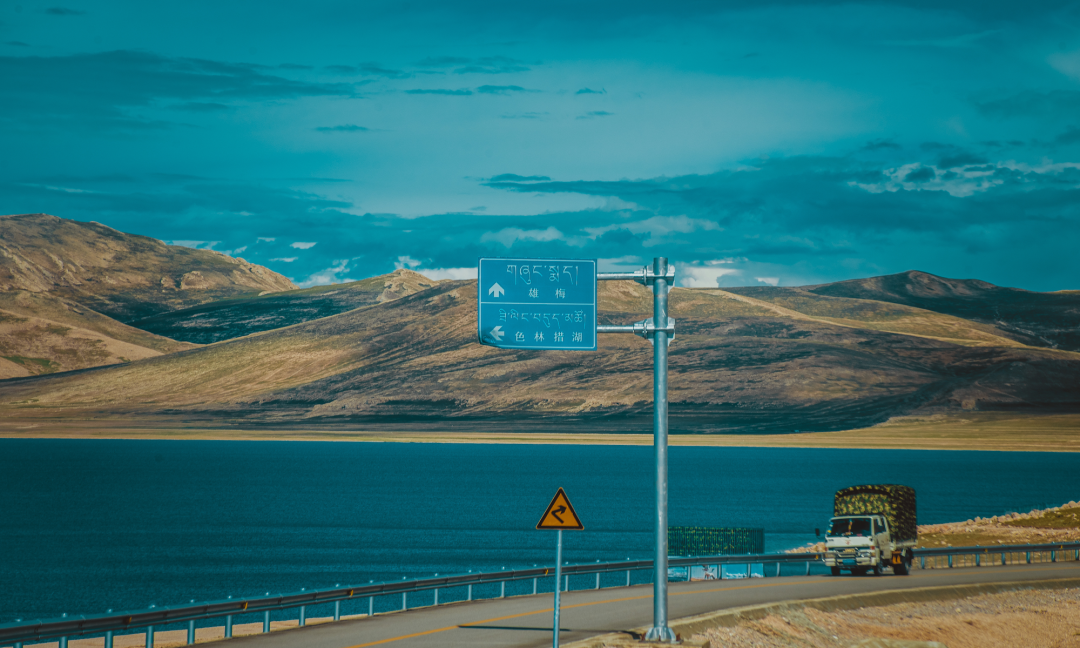
When mentioning Tibet, one might think of Lhasa, Yamdrok Lake, Mount Everest, the ten-mile peach blossoms of Nyingchi… We often scroll through various scenic spots of Tibet on social media, but how much do you really know about Tibet? Tibet, officially known as the Tibet Autonomous Region, is located in the southwest of China, with Lhasa as its capital. It covers about one-eighth of China’s total area, making it the second largest provincial-level administrative region in the country.
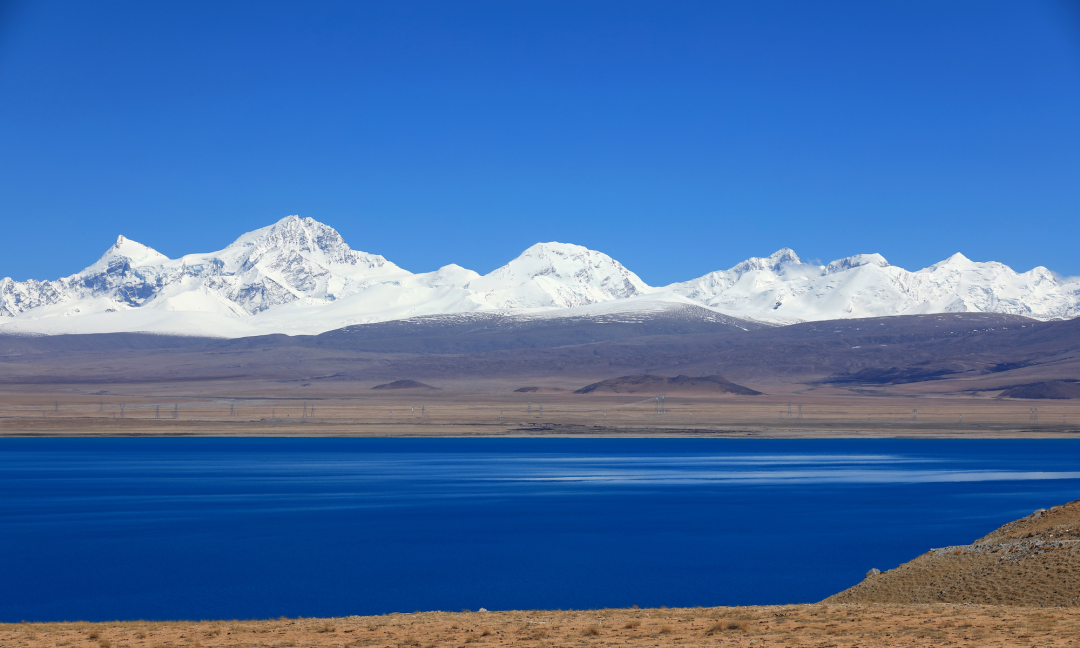
The Qinghai-Tibet Plateau, where Tibet is located, is the world’s largest and highest plateau, known as the “Roof of the World” and the “Third Pole of the Earth.” Because of its unique geographical features, Tibet is endowed with countless snow-capped mountains, glaciers, rivers, and lakes.
Tibet is administratively divided into six prefecture-level cities and one region. Let me first list the major attractions in each city/region for clarity while reviewing the guide:
– Lhasa: Potala Palace, Barkhor Street, Jokhang Temple, Sera Monastery, Namtso Lake, etc.
– Chamdo: Lai Gu Glacier, Ranwu Lake, etc.
– Shannan: Yamdrok Yumtso Lake, Pumoyum Lake, Samye Monastery, Changzhug Monastery, etc.
– Shigatse: Tashilhunpo Monastery, Everest Base Camp, Xishapama, Rongbuk Glacier, etc.
– Nagqu: Mount Sapu, Qiangtang, Pulangri, Kekexili, Cuolhu, Dangreyongcuo, etc.
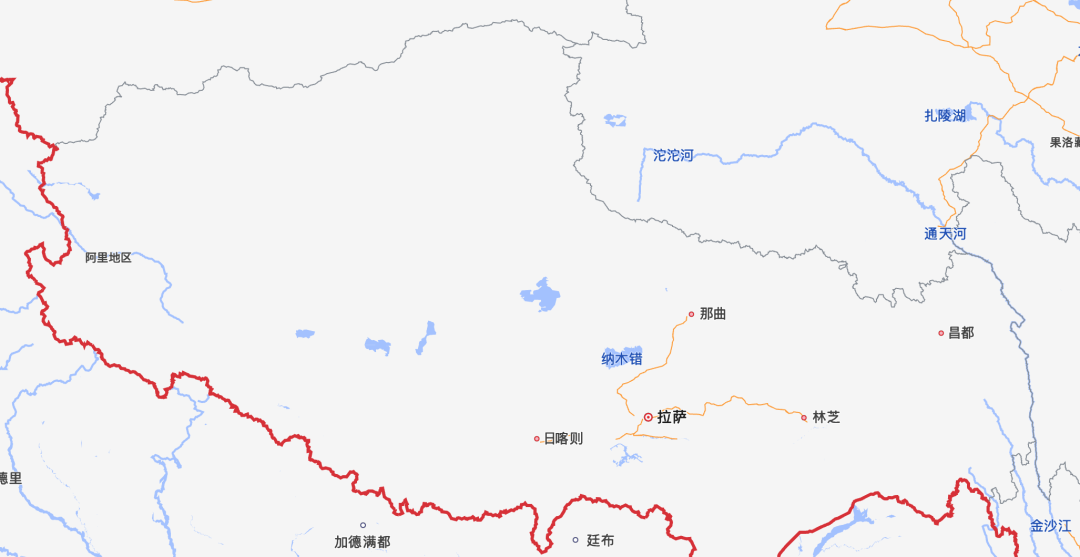
– Nyingchi: Basum Lake, Yarlung Tsangpo Grand Canyon, Luolang Forest Sea, Namcha Barwa, Metok, etc.
– Ngari: Zhada Clay Forest, Mount Kailash, Manasarovar Lake, Guge Kingdom, La’ang Co, Bangong Co, etc.
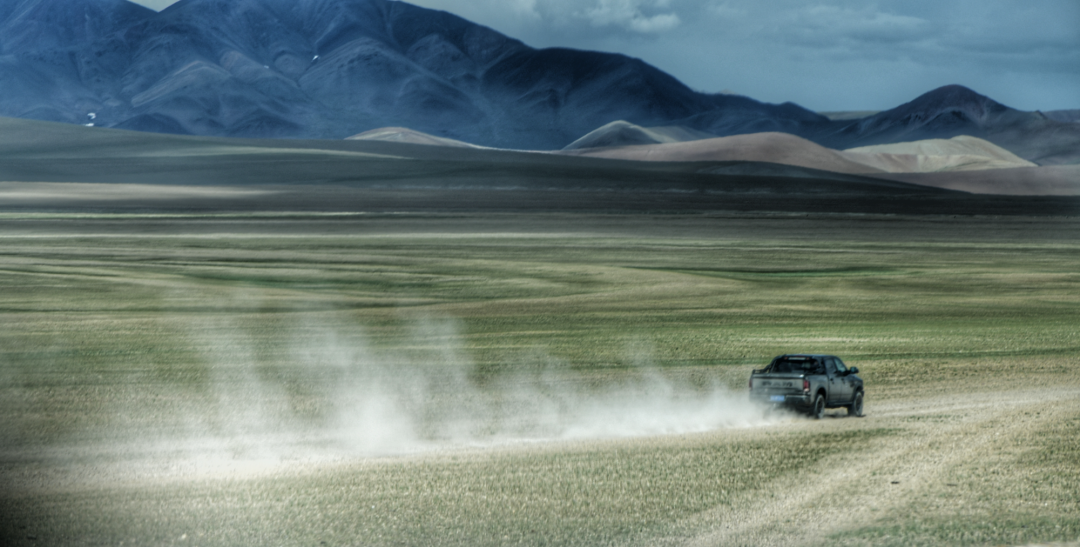
Of course, Tibet is vast and sparsely populated, with limited public transportation in many areas. Some breathtaking scenery is located in hard-to-reach places, so one should make the most of their trip. Generally, to explore Tibet, one can either follow an entry route into Tibet until reaching Lhasa or travel in a loop within the Tibet Autonomous Region. For transportation, self-driving or renting a vehicle with friends is the most suitable and economical choice.
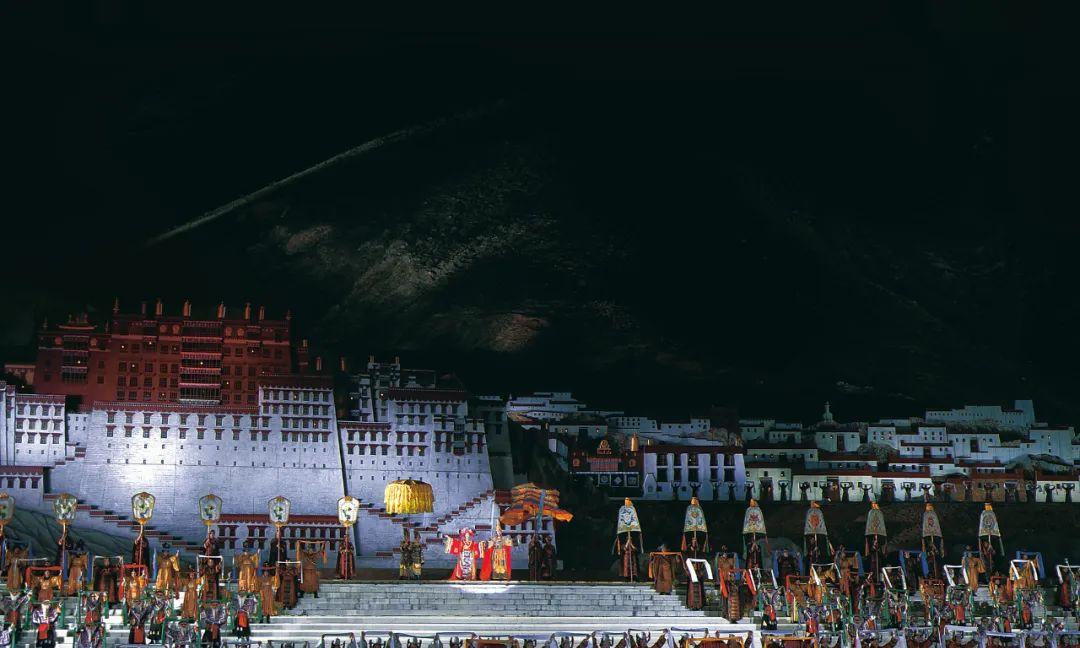
Regarding the routes into Tibet, Tibet shares borders with Xinjiang, Qinghai, Sichuan, and Yunnan. Familiar routes such as the 318, 317, Yunnan-Tibet route, Bingzhang Canal route, New Tibet route, and Qinghai-Tibet route are all available for travel.
The 318 is the earliest popular entry route, which is well-established and allows traveling through Daocheng Yading, Nyingchi, etc. The Bingzhang Canal route is irresistible for off-road enthusiasts. The Qinghai-Tibet railway is highly recommended for its scenic train journey from Xining directly to Lhasa, encompassing unforgettable landscapes.
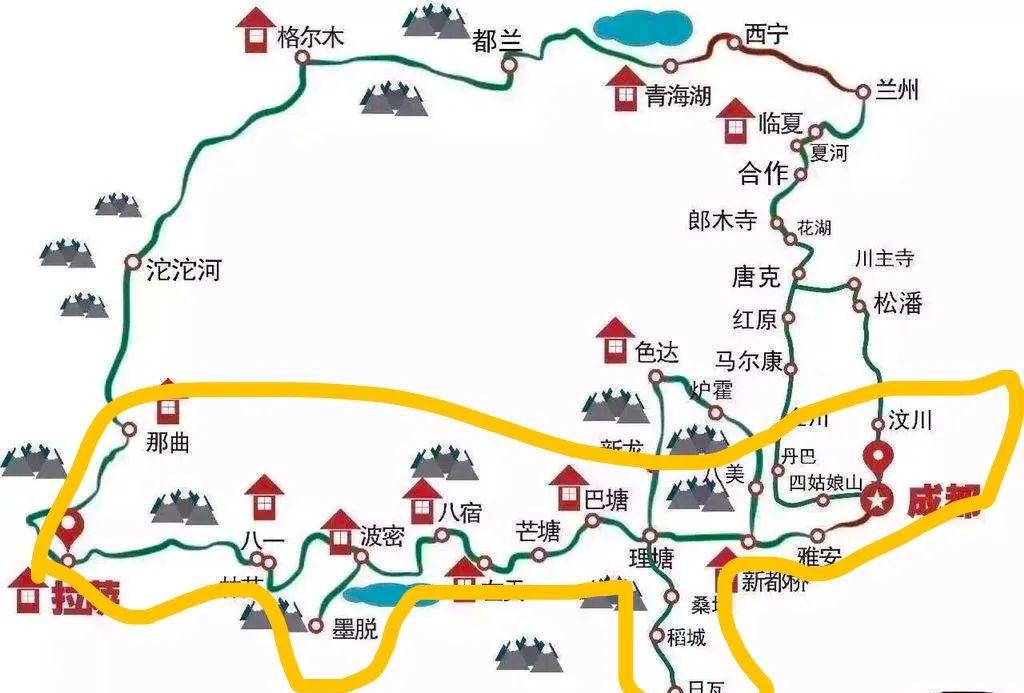
As for the New Tibet route, the technical demands on the driver are high, but the scenery is the wildest. Previous articles have covered these routes, and you can refer to the links below:
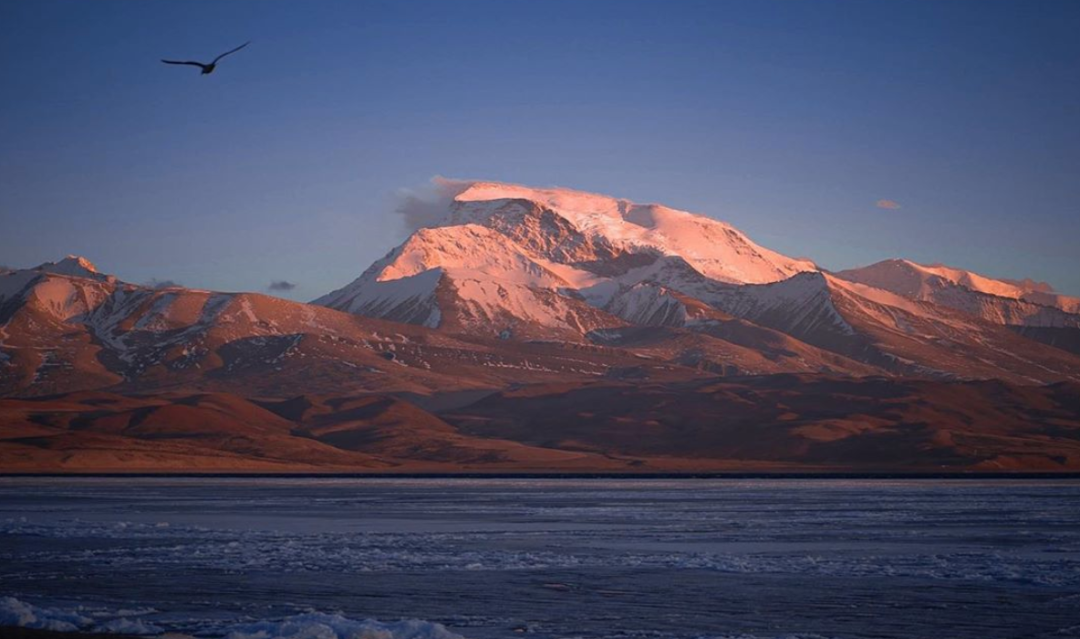
– 318: I took a personal journey on the 318 route and summarized a detailed guide on the Sichuan-Tibet route.
– Bingzhang Canal: Known as the most dangerous route into Tibet, I have traversed it for you!
Today’s piece is solely a winter guide to Tibet; thus, I won’t elaborate on the entry routes any further. Instead, let’s discuss how to enjoy Tibet in winter. I’ll be recommending several routes that are particularly suitable for winter travel for your reference!
**Lhasa: “City of Sunlight,” “City of Faith”**
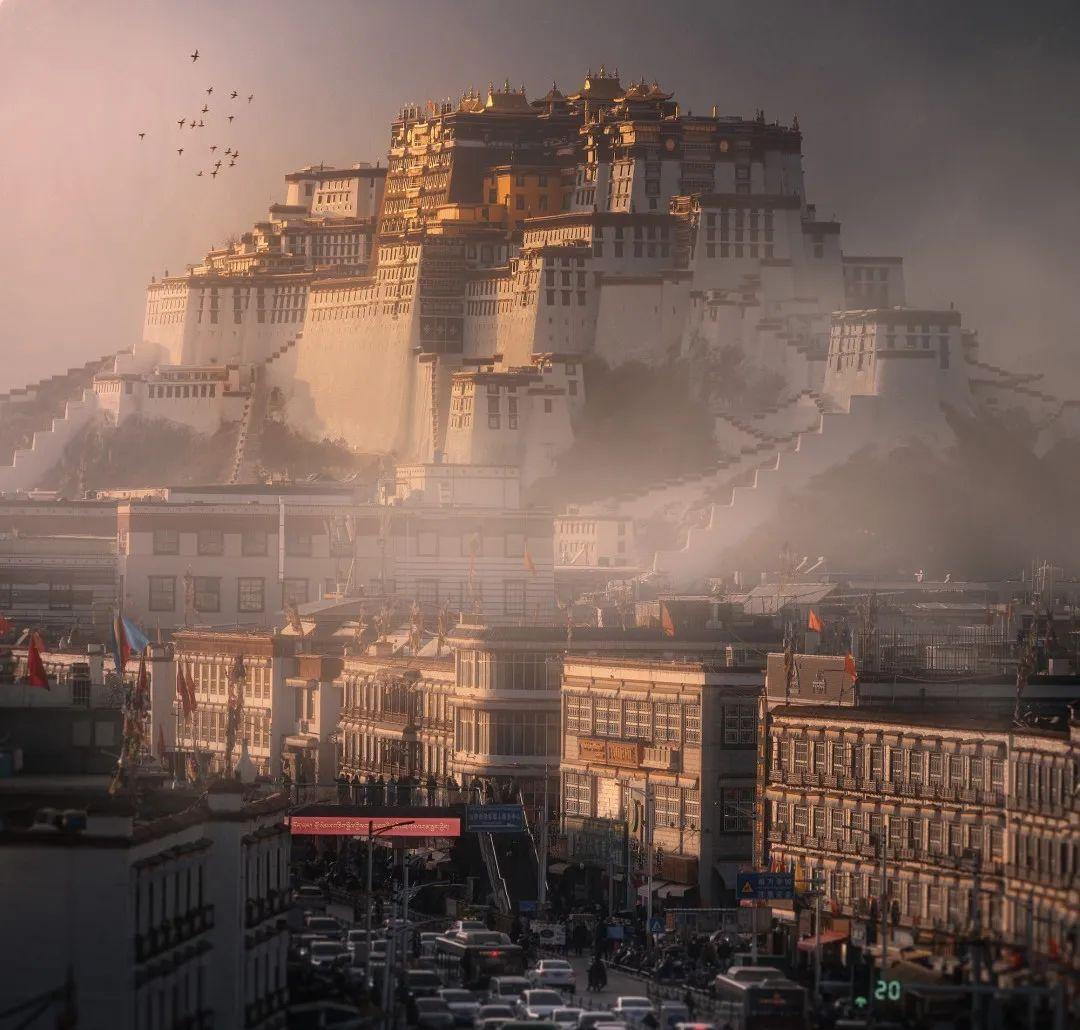
Most travelers’ first stop upon arriving in Tibet is Lhasa. It is the capital of Tibet and the “City of Sunlight,” known for having over 3,000 hours of sunshine annually. Here lies faith, with waves of visitors embarking on long journeys, and the prayer wheels never cease turning in pursuit of blessings.
**Potala Palace:**
💰 Free admission under the “Winter Tourism in Tibet” policy.
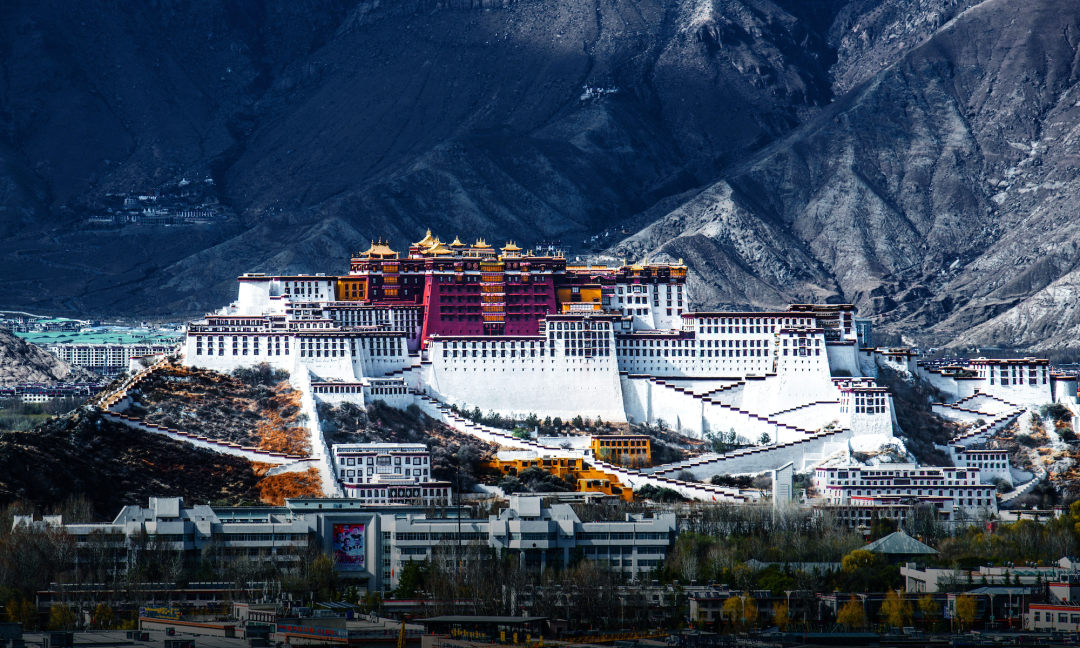
A trip to Lhasa isn’t complete without a visit to Potala Palace. Although it’s easier to book in winter, it’s advisable to reserve your spot through the “Potala Palace” official WeChat account in advance, as multiple entries require separate reservations. Remember to bring your ID; it’s suggested to enter through the South Gate first to visit the Eight Scenic Views of the Snow City before heading to the palace, where photography is not allowed.
It’s recommended to hire a guide for an in-depth understanding of the palace’s history. Some great photography spots for Potala Palace include the square in front of it, the Yao Wang Mountain viewing platform on the west side of the square (this offers a view akin to the 50 RMB note), and Nanshan Park…
**Tips:**
You can only book Potala Palace once within seven days. If you cancel an appointment after successfully booking, you will not be able to book again within seven days. Same-day reservations are not allowed; you must book one day in advance.
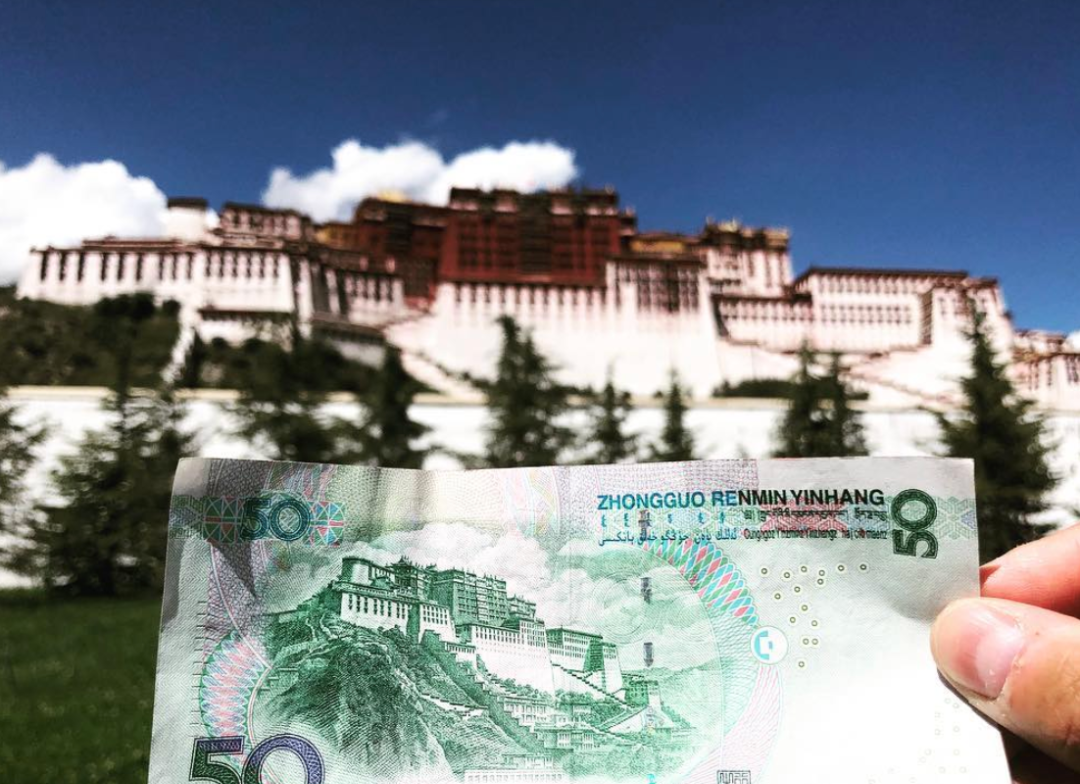
**Jokhang Temple:**
💰 Admission: 85 RMB
The Jokhang Temple precedes Lhasa city. Located in the center of Barkhor Street, it is a temple of Tibetan Buddhism with over 1,300 years of history. The temple houses a twelve-year-old statue of Shakyamuni brought by Princess Wencheng, regarded as the temple’s treasure. The murals inside are extraordinary; don’t miss the paintings in the Buddhist halls and circumambulation corridors, which provide deeper insight into Tibetan history. Visitors should be aware that the temple must be visited in a clockwise direction.
**Barkhor Street:**
Barkhor translates to “the circulating pilgrimage path,” seen as a sacred road by locals. You will frequently encounter many believers prostrating or turning prayer wheels, which will always touch your heart with the power of faith. There are also many Tibetan-style photo studios here, so if you’re interested in taking photos, make sure to compare prices.
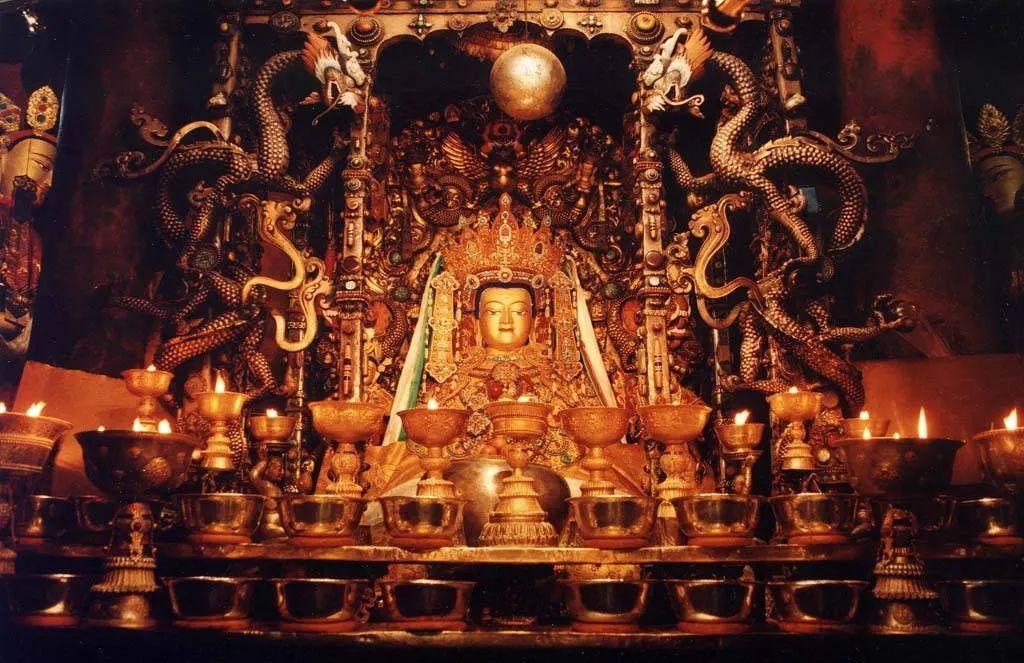
**Sera Monastery:**
💰 Admission: 50 RMB
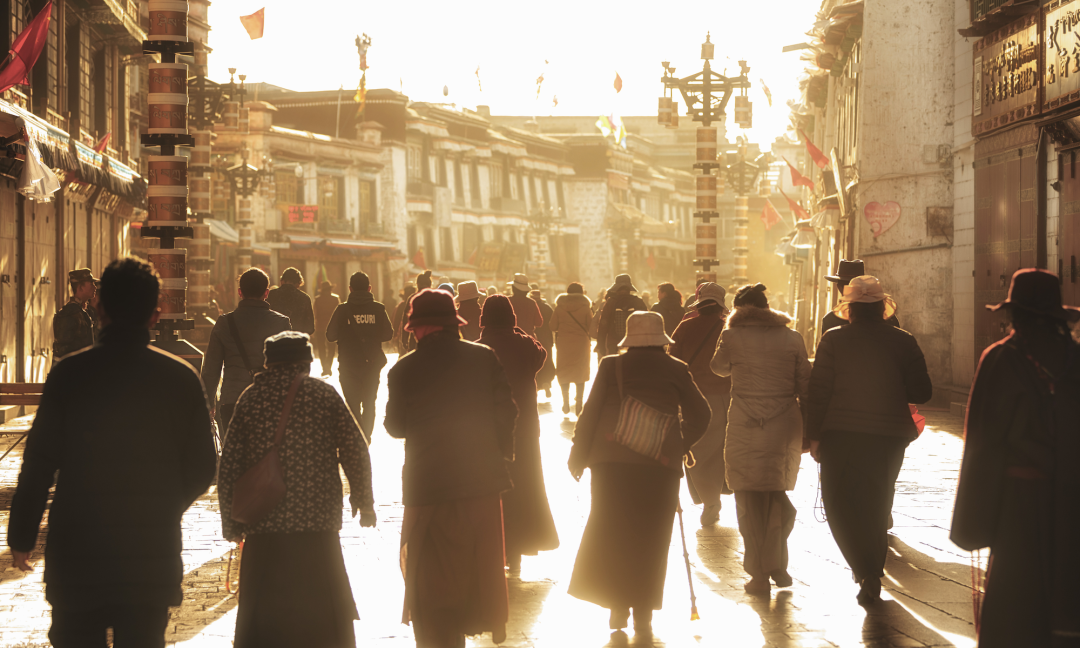
Sera means “wild rose” in Tibetan—a romantic name indeed. It is one of the six major Gelug monasteries in Tibetan Buddhism. The best time to visit is in the afternoons, when debating sessions occur from 3:00 PM to 5:00 PM every Monday to Saturday, which can be quite entertaining. The main hall often closes in the afternoon, so it’s best to visit the Tsokchen Hall first before watching the debate. Additionally, this location is perfect for photography.
**Zhakyi Temple:**
It is said, “Ignore love before the temple of Yue Lao, kneel forever before the God of Wealth.” This small temple dedicated to the God of Wealth is a rarity in Tibet. Here, one can pray for wealth, hoping that wishes for prosperity may come true. It’s a tiny temple, recommend visiting on Wednesdays when offerings are made to the God of Wealth, where monks can inscribe your name for blessings.
**Namtso Lake:**
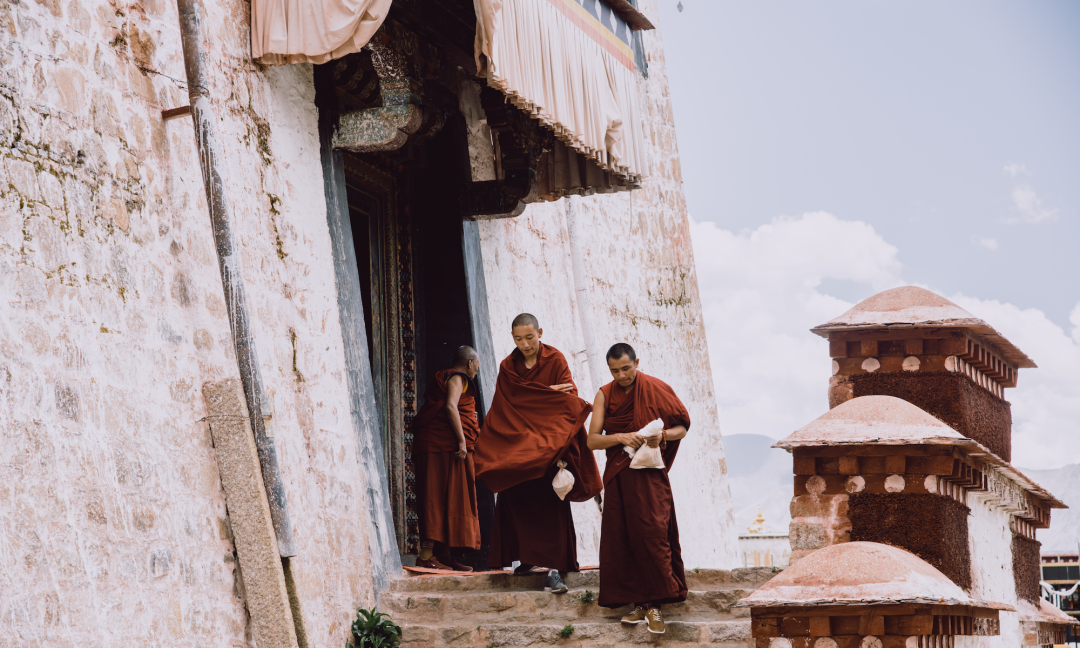
💰 Free admission under the “Winter Tourism in Tibet” policy.
No matter the season, visiting Namtso Lake, one of Tibet’s three sacred lakes, is a must. It is the highest saltwater lake in the world with stunning scenery. The winter landscape of Namtso reveals a blue ice cover over the lake, complemented by the white snow-capped mountains in the distance.

Standing on this snowy plateau, it feels as if the world consists only of shades of blue and white. From February 1st, the Lhasa = Namtso direct route will officially operate; specific itineraries, pricing, and contact details are available on the “Lhasa Tourism” WeChat account. The Lhasa Tourism Bureau has provided the following itinerary:
For a more flexible experience, you may also consider rallying a few friends or travel companions to rent a vehicle.
❤️ For a leisurely itinerary in Lhasa, consider integrating tea houses, cafes, and snack shops along the way:
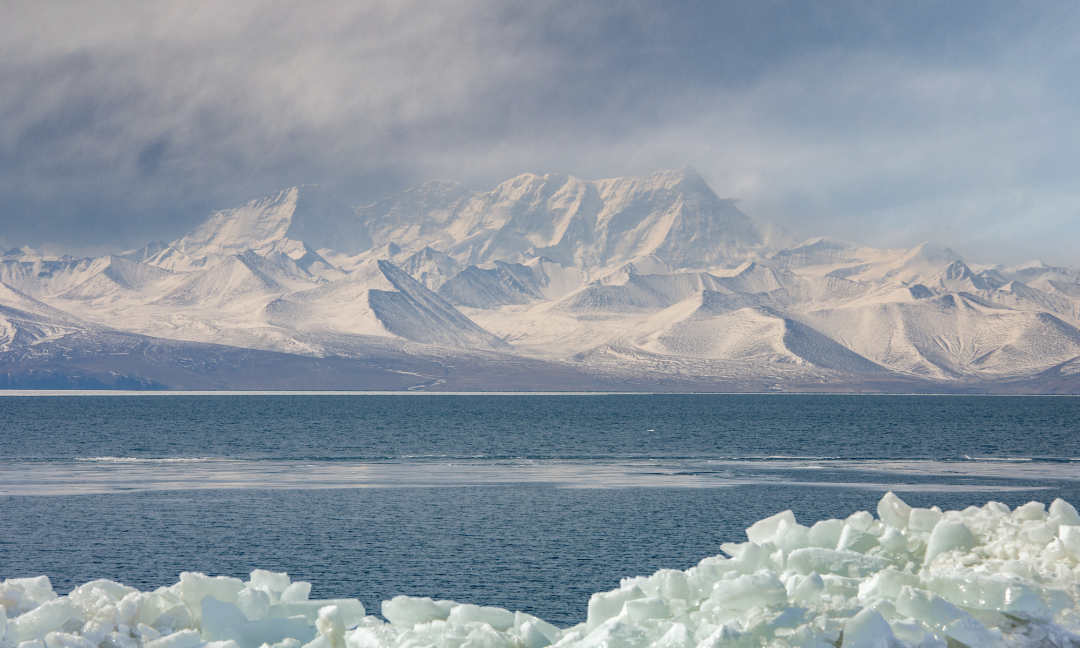
D1: Jokhang Temple – Barkhor Street – Sera Monastery
D2: Potala Palace – Zhakyi Temple
D3: Namtso Lake
**Nyingchi: “Southern Tibet,” Lower Altitude**
Though April is considered the peak season for Nyingchi, I believe winter presents the best opportunity to visit this area. The winter scenery is stunning, it’s cost-effective—accommodation prices are significantly reduced—and the climate is comfortable, with winter temperatures typically ranging from 15 to 20 degrees Celsius. Moreover, due to Nyingchi’s lower altitude, there are fewer concerns regarding altitude sickness, even in winter.
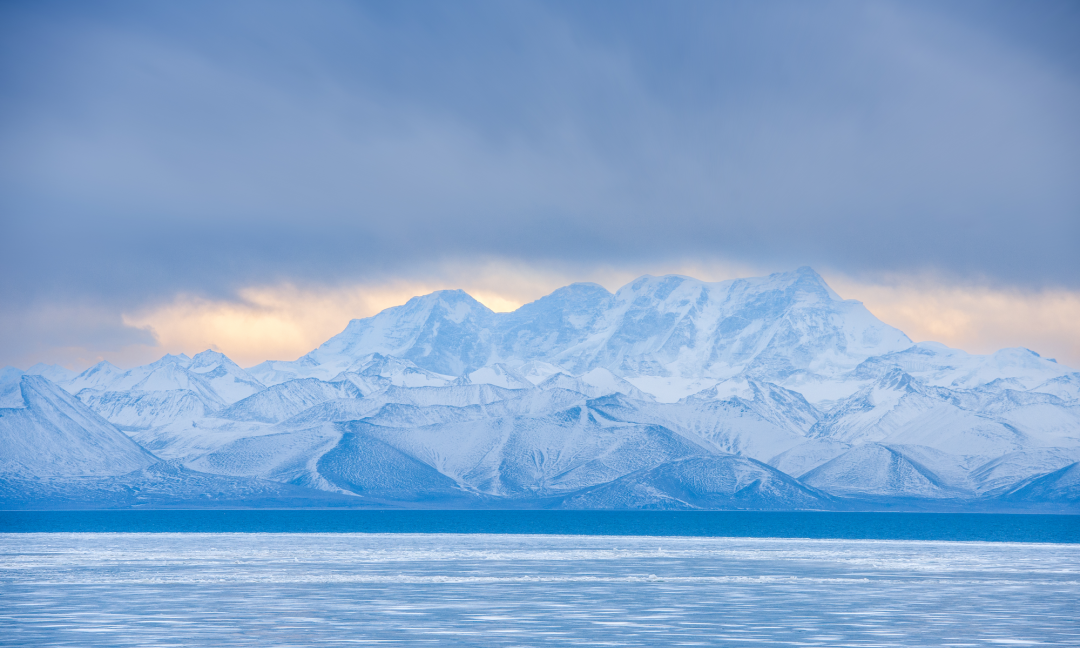
**What to See in Nyingchi in Winter:**
– **Bird Watching:** From October to February, black-necked cranes can be seen by the lakeside, and a snowfall enhances the beauty.
– **Viewing Snow Mountains:** The elusive Namcha Barwa, which is often underseen, has a higher chance of being spotted in winter.
– **Seeing Blue Ice:** This is a winter-exclusive sight, with the blue glaciers appearing dreamlike.
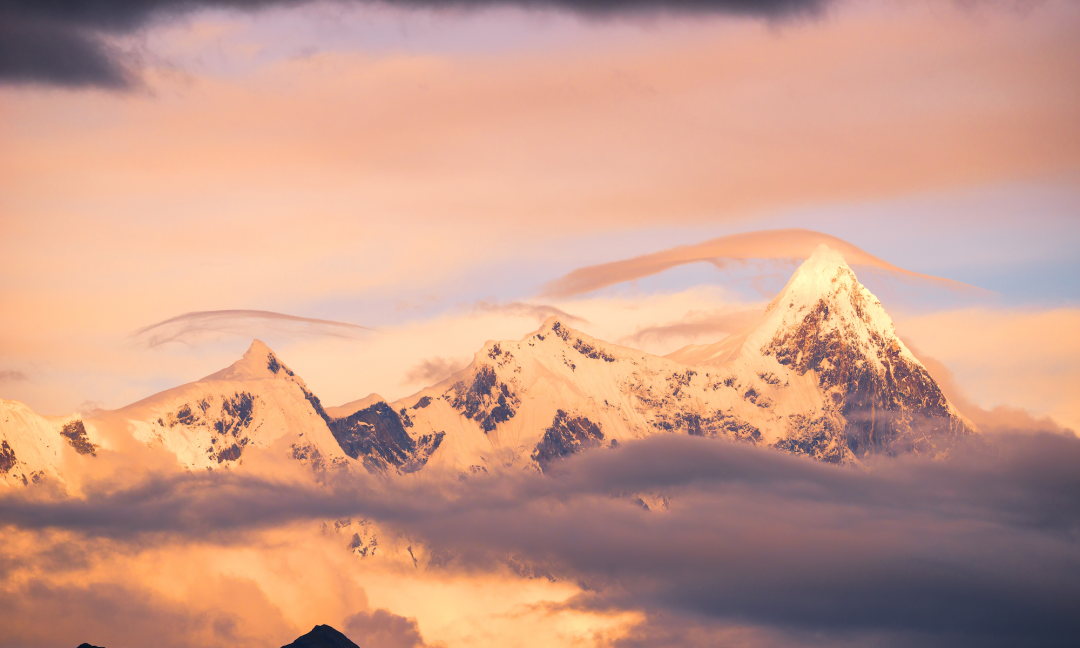
**Basum Lake:**
💰 Free admission under the “Winter Tourism in Tibet” policy.
The Basum Lake area is quite large, and besides the well-known Basum Lake, there are beautiful regions such as Cuogao Village and New Cuogao. If time permits, devote sufficient time to explore this area and consider staying overnight in the area. A visit to Basum Lake allows exploration of snow-capped mountains, lakes, forests, and glaciers—very worthwhile.
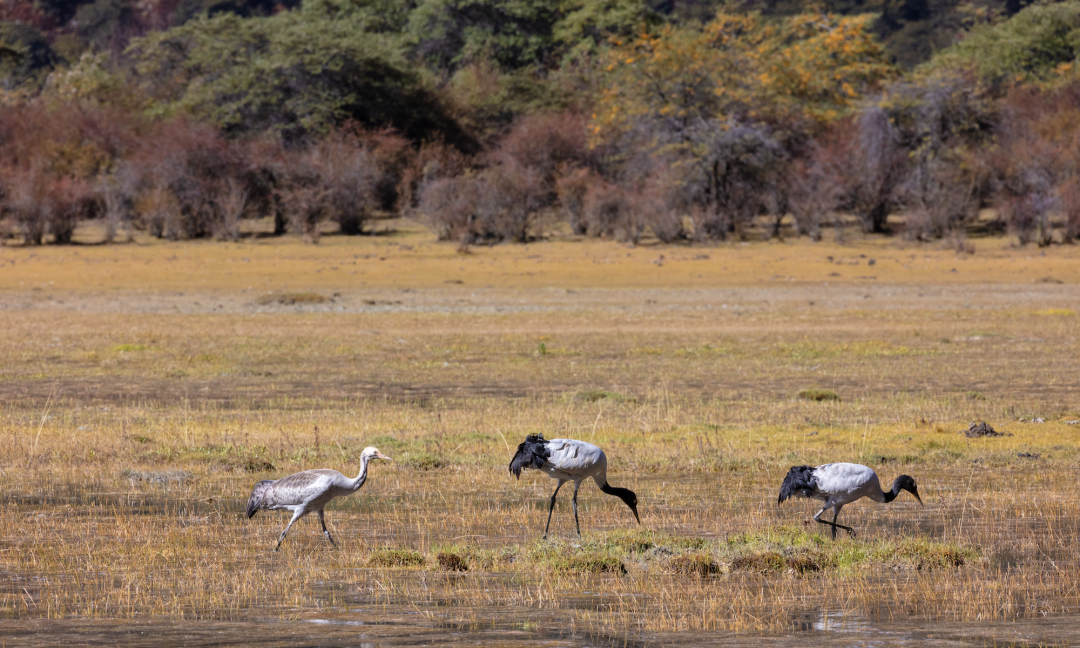
Consider staying in Jiega Village, where, after a boating trip to the lake’s heart island, you can leisurely stroll along the lakeshore. If the weather is good, you will see three snow-capped mountains reflected in the lake’s surface—a truly ethereal sight. The next day, venture to Cuogao Village, which, although now abandoned, is wonderfully photogenic. If you enjoy hiking, New Cuogao is a great recommendation, as it remains relatively undeveloped with pristine Tibetan scenery that feels like a fairytale.
**Selinla Mountain Pass:**
This viewpoint is a famous check-in spot along the 318 route; if luck permits, it offers breathtaking views of the sunrise over the sea of clouds with Namcha Barwa in the distance.
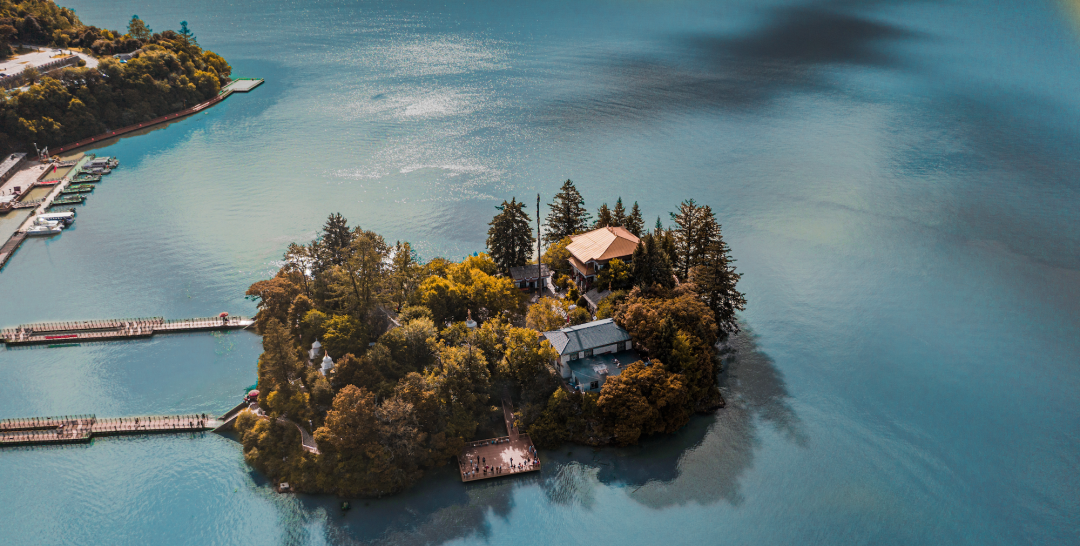
**Lulang Town:**
💰 Free admission under the “Winter Tourism in Tibet” policy.
A quaint Tibetan town that feels quite “fairy-tale-like,” where verdant hills and alpine pastures coexist harmoniously. Walking in this town lifts the mood; consider spending a night here.
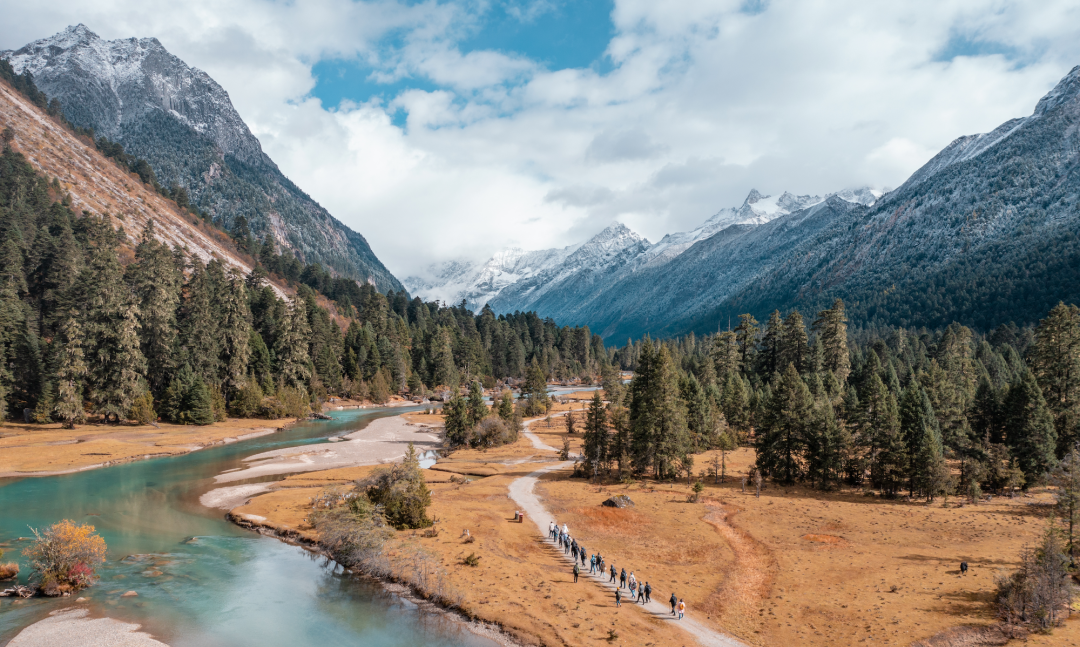
**Suosong Village:**
💰 Free admission under the “Winter Tourism in Tibet” policy.
Visiting Suosong Village primarily allows for views of Namcha Barwa. Namcha Barwa is both the highest peak in Nyingchi and the 15th highest mountain in the world, and it has been dubbed the most beautiful peak by “China National Geography.” It appears like a spear piercing the sky, mysterious and sacred. You can stay at homestays in Suosong Village, where opening your door reveals the majestic Namcha Barwa. The cloud rooftop courtyard at the village’s highest point is also a fantastic viewpoint for capturing the mountain’s full panorama. On your way to Suosong Village, consider stopping at the Yarlung Tsangpo Grand Canyon.
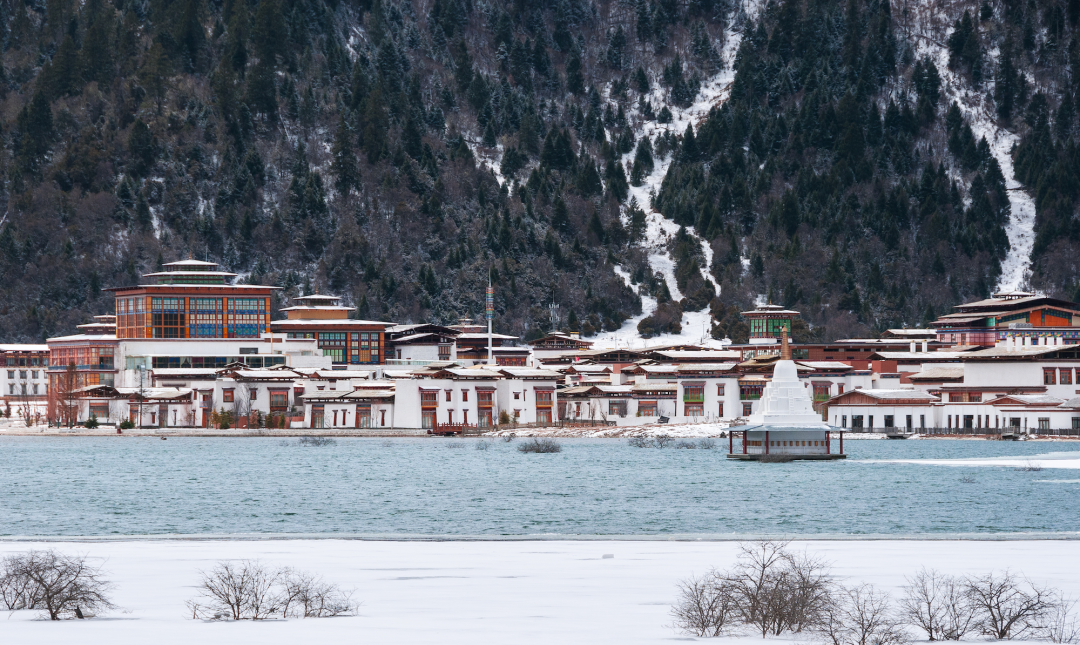
**Midui Glacier:**
💰 Free admission under the “Winter Tourism in Tibet” policy.
Midui Glacier is recognized as “one of the six most beautiful glaciers in China,” featuring ice waterfalls and stunning scenery of intertwined glaciers, villages, and forests that resemble a paradise. For those suffering from severe altitude sickness but wishing to see a glacier, this location, at an elevation of less than 3,000 meters, will be much more comfortable.
**Laigu Glacier:**
💰 Free admission under the “Winter Tourism in Tibet” policy.
The Laigu Glacier is the largest glacier group in Tibet, and its blue ice is an extraordinary sight in winter. Regarding your visit, it is advisable to enter the glacier early in the day, as there are many blue ice formations to enjoy. Horseback riding is also available, making it easier to navigate the area and conserve energy for the experience.
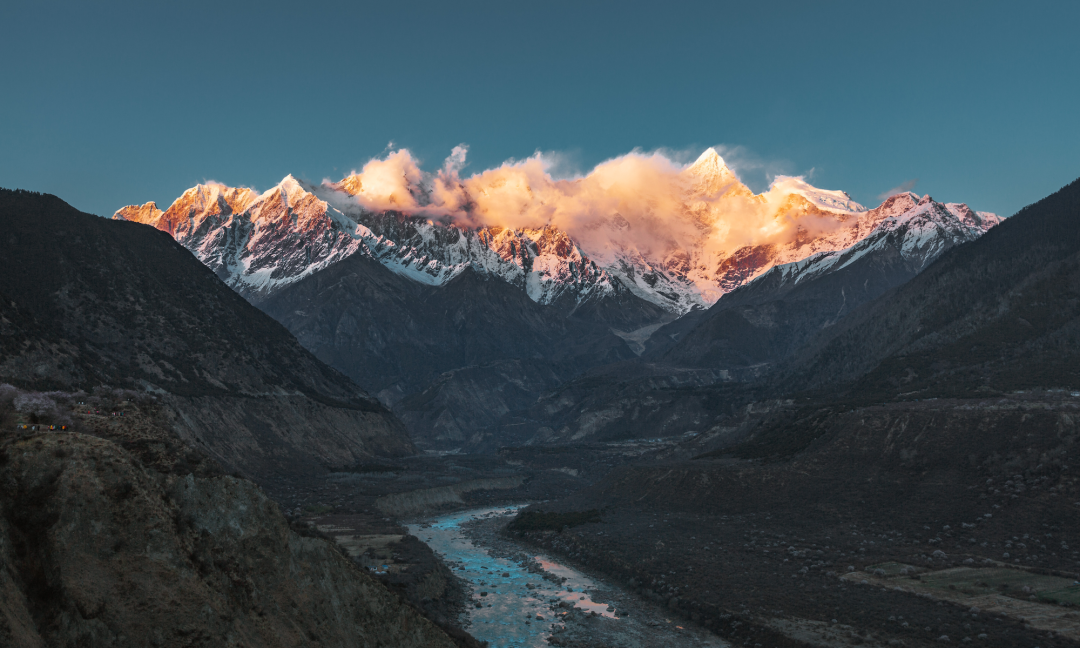
**Buddha’s Palm Sand Dunes:**
💰 Admission: 30 RMB
This small attraction lies on the route to Suosong Village. The rare scene of snow-capped mountains alongside a desert has gained popularity. If you plan to photograph, it’s best to arrive early, as fewer people allow for more ethereal compositions.
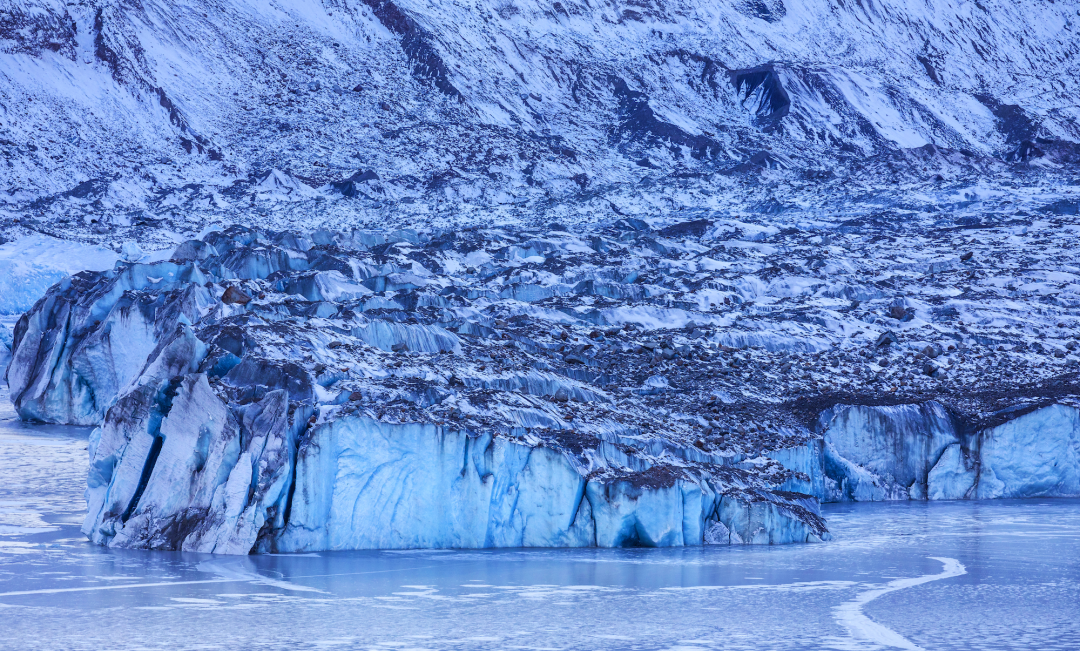
❤️ For your Nyingchi itinerary, consider self-driving or renting a vehicle:
D1: Nyingchi – Buddha’s Palm Sand Dunes – Suosong Village
D2: Suosong Village – Selinla Mountain – Lulang Forest Sea – Tongmai Bridge – Bomi
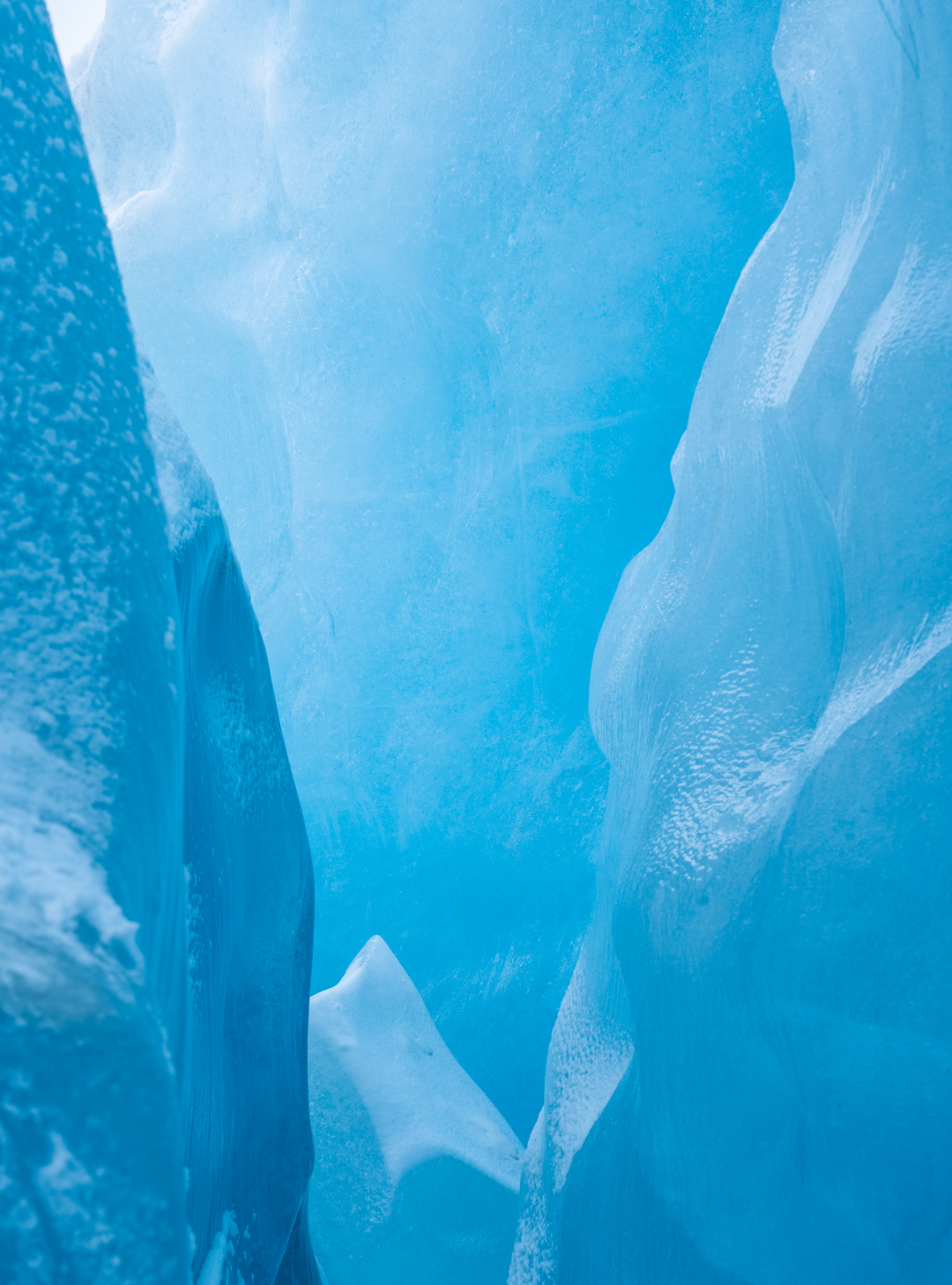
D3: Bomi – Midui Glacier / Laigu Glacier – Ranwu Lake
D4: Ranwu Lake – Midui Glacier – Lulang International Town
D5: Lulang – Basum Lake – Nyingchi / Lhasa
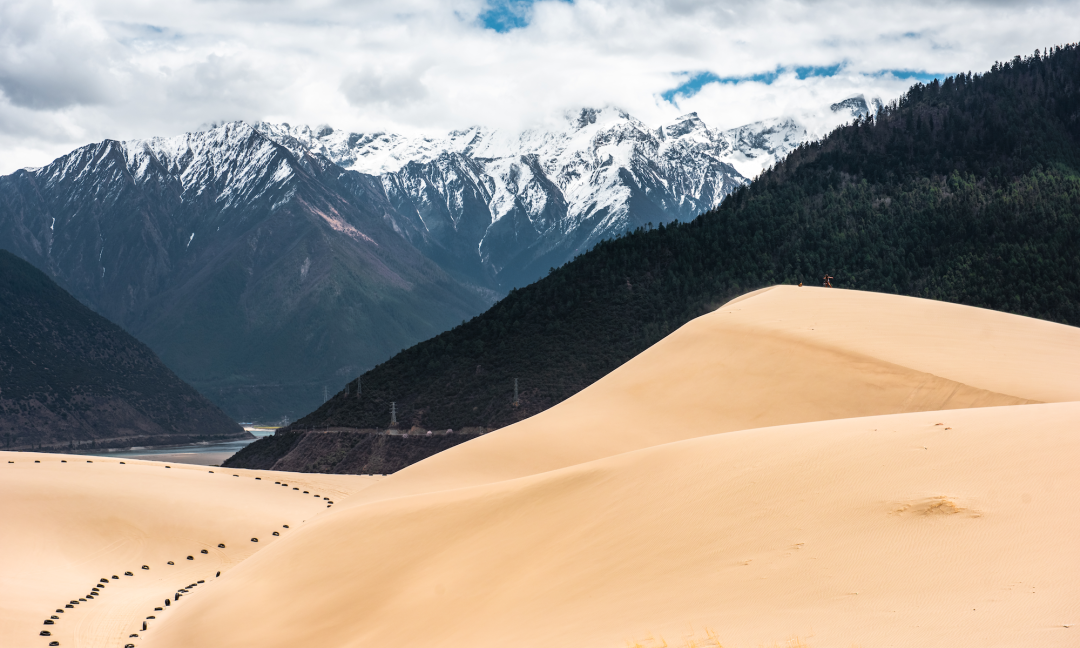
**Hiking the Himalayas:**
“Freedom of Snow Mountains,” The World’s Highest Peak
If you visit Tibet and do not see the snow-capped mountains, what will you see? Tibet boasts more than 40 peaks over 7,000 meters high, providing the ultimate experience of freedom among the mountains. A trip to Tibet in winter necessitates a visit to Mount Everest; standing at Everest Base Camp holds significance like no other. Everest is located in Shigatse, and your visit often combines it with Lhasa and surrounding areas.
**Yamdrok Lake:**
💰 Free admission under the “Winter Tourism in Tibet” policy.
Along with Namtso Lake, Yamdrok Lake is one of Tibet’s three sacred lakes. This vast lake, exhibiting an incredibly blue hue, appears stunning when viewed from the viewing platforms, set against the backdrop of snow-capped mountains.
**Kawagarbo Mountain Pass:**
Though not an attraction in itself, this mountain pass is one of my favorite spots. At an altitude of 5,210 meters, it allows a simultaneous view of five 8,000-meter peaks: Makalu, Lhotse, Everest, Shishapangma, and Xishapama. Standing here gives one the sensation of having the world beneath their feet, where the sky seems within reach.
**Everest Base Camp:**
💰 Free admission under the “Winter Tourism in Tibet” policy, but shuttle bus costs are additional.
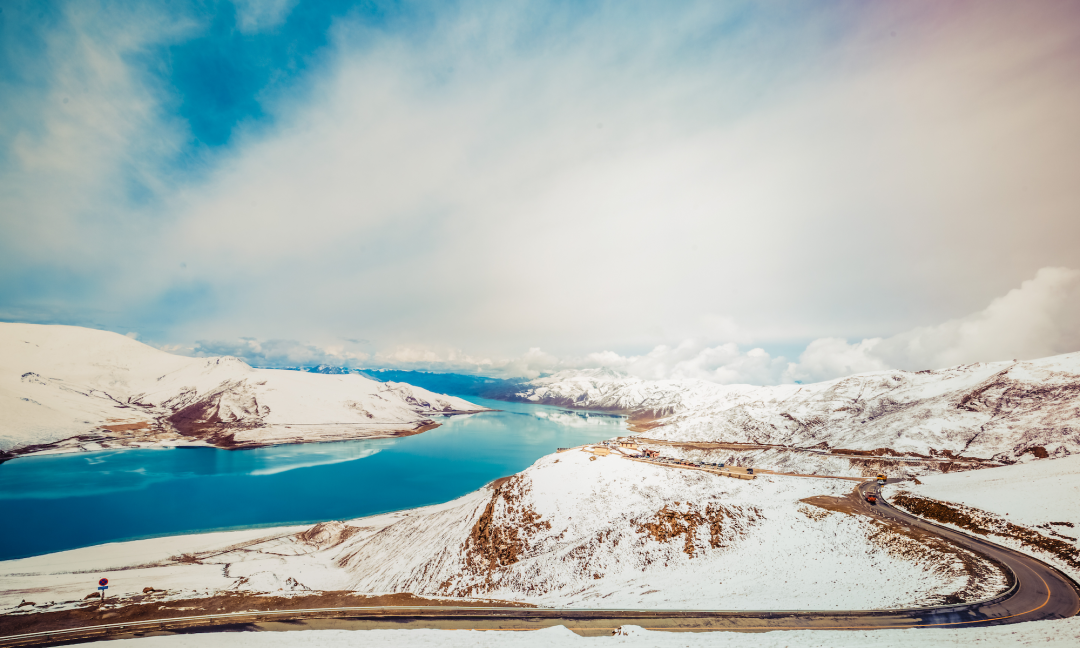
Everest—the dream of many! This is possibly the highest place on Earth accessible to the general public. Standing before the world’s tallest peak is an unparalleled experience of awe.
When here, be sure not to miss the golden sunrise illuminating the mountain or the starry sky at night—it’s breathtaking. Visitors often dance at night, but it’s advisable to keep safety as a priority due to the high altitude. Don’t forget to check in at the world’s highest post office to send yourself or friends a postcard blessed by Everest. Currently, base camp tents are closed, so lodging is available only in nearby areas. Remember to apply for a border pass at local police stations in Tibet or Lhasa in advance; if traveling extensively, you can request a pass for all of Tibet.
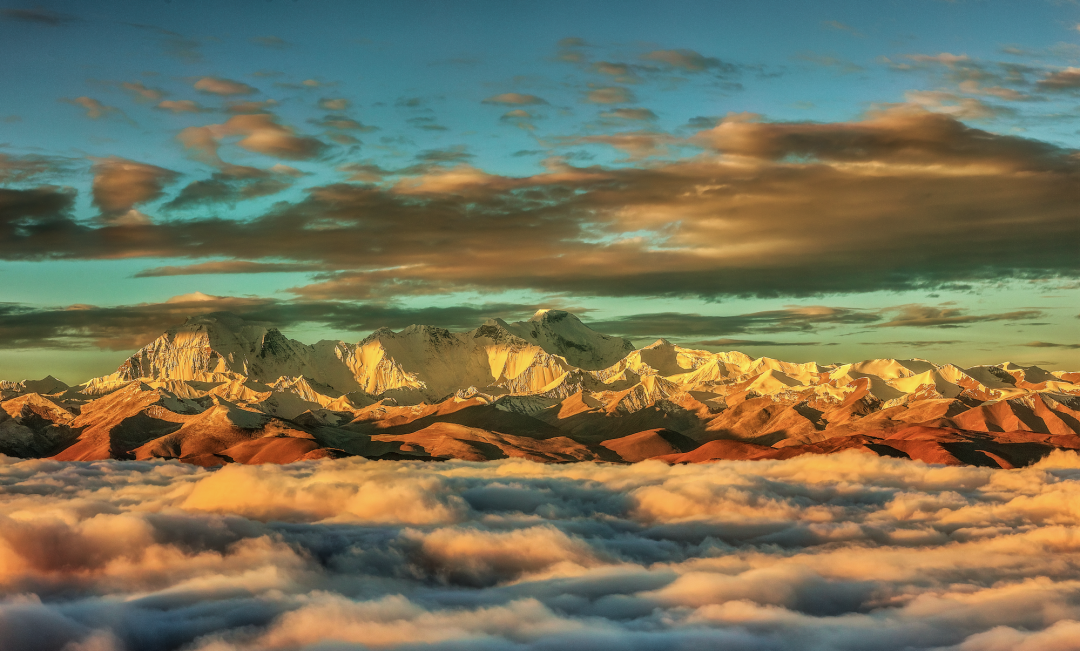
**Rituse Monastery:**
💰 Admission: 20 RMB
This isolated temple is located on the north bank of Yamdrok Lake, reportedly home to only a single monk. It’s a compelling sight amidst the ethereal blue expanse of the plateau, making it a unique attraction worth visiting. The scenery is delightful, but be cautious of the poor road conditions.
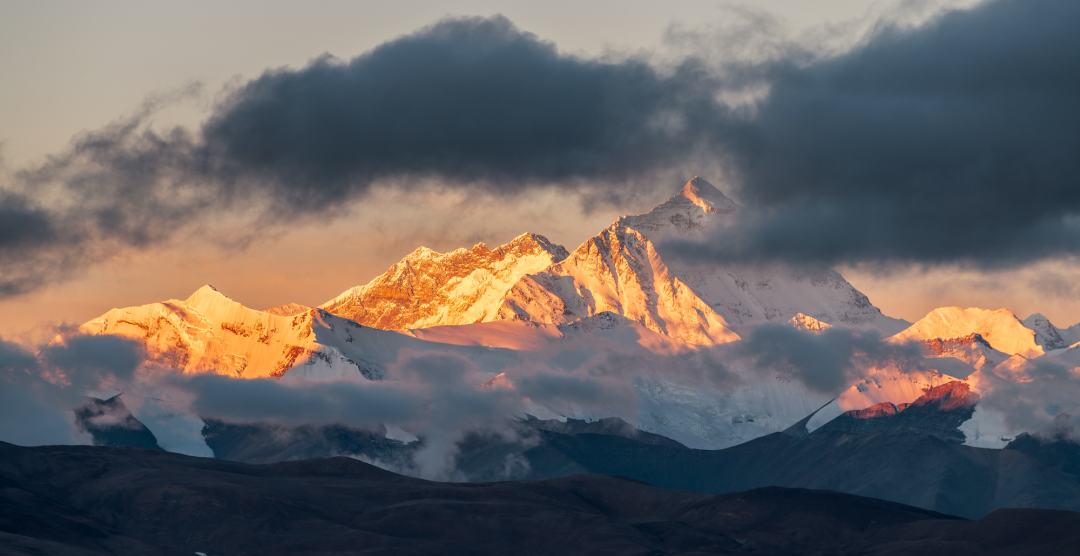
**Selinco Lake:**
Translating to “Devil’s Lake reflecting brilliant light” in Tibetan, it is breathtakingly beautiful. The lake is home to protected wildlife such as Tibetan antelope, wild horses, and snow leopards, and if you are lucky, you may capture some on camera. Interestingly, Selinco was originally ranked as Tibet’s largest lake; however, its surface area has expanded, surpassing Namtso Lake and claiming the title of Tibet’s largest lake by 2010.
If your holiday is short, consider this rather conventional route:
D1: Lhasa – Yamdrok Lake – Karola Glacier – Shigatse
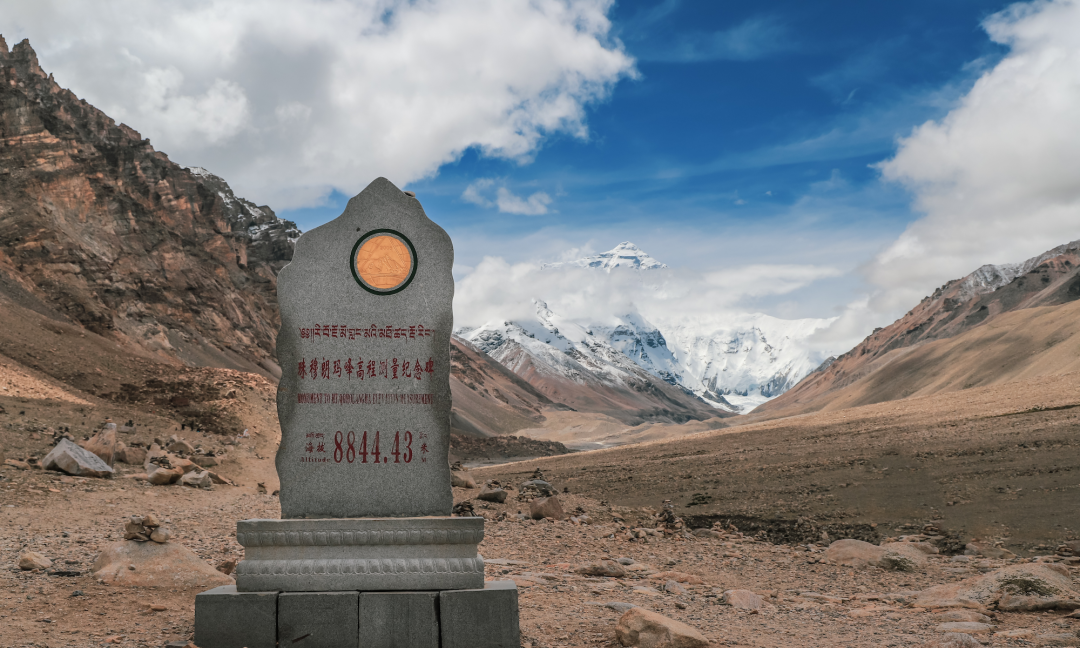
D2: Shigatse – Dingri – Gyatso La Pass – Everest Base Camp
D3: Everest Base Camp – Kawagarbo Mountain Pass – Nimu Grassland – Dangxiong
D4: Dangxiong – Northern Tibetan Grasslands – Namtso Lake – Lhasa
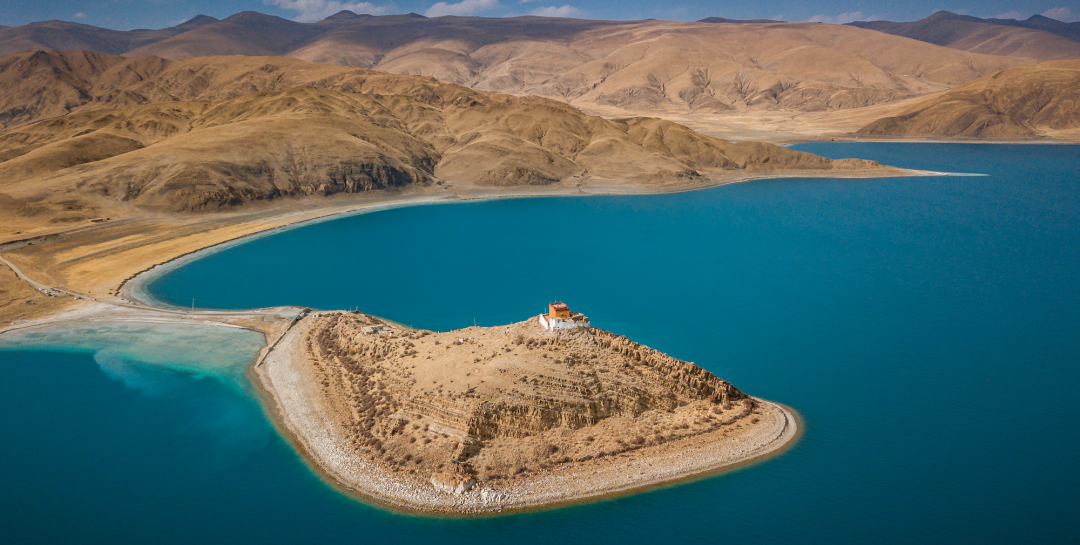
For those wanting to see more landscapes, you can follow this itinerary:
D1: Lhasa – Yamdrok Lake – Rituse Monastery – Pumoyum Lake – Se Village
D2: Se Village – Baimalin Lake – Lhoza
D3: Lhoza – Kuolangri Northern Slope – Kangma
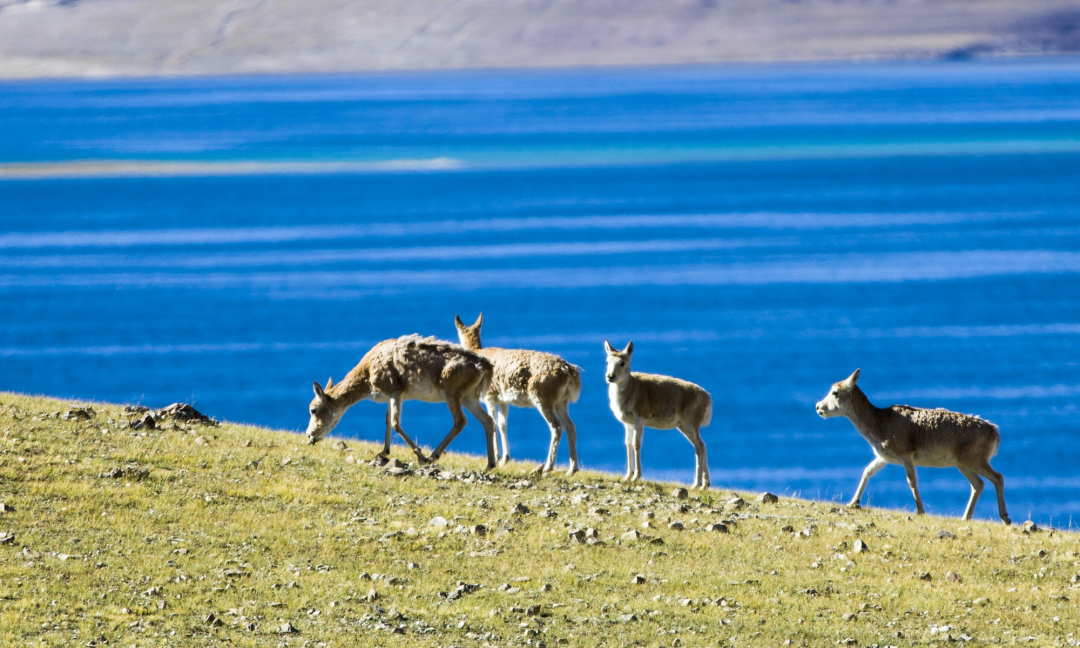
D4: Kangma – Duoqing Lake – Quzen Nima Glacier – Chen Tang
D5: Chen Tang – Kawagarbo Mountain Pass – Everest Base Camp
D6: Everest Base Camp – Tashilhunpo Monastery – Shigatse
D7: Shigatse – Namuling Qiangtang Prairie – Selinco Lake – Banggo
D8: Banggo – Namtso Lake – Lhasa
**Ali Great Circuit:**
“The Third Pole of the World,” “A Wrong Turn After Another.”
In the Ali region lies the true essence of Tibet. This is perhaps the highest elevation point in Tibet; many areas are deserted and termed “the forbidden zone for life.” The views here are unparalleled globally, with the grandeur of the Tibetan landscape, the vast desolation of the Qiangtang Prairie, and the sanctity of Mount Kailash—these make a moment last an eternity.
**Mount Kailash:**
Mount Kailash, the center of the world! At an elevation of only 6,656 meters, it is recognized as the king of divine mountains and the world’s center. Its pyramid-like shape is capped with perpetual snow, and the peak is often enshrouded in clouds, making it hard to see its true form. The sides of the mountain display an interplay of ice chutes and horizontal rock layers, resembling auspicious symbols in Buddhism. It is the earthly abode of the Buddhist deity Vajradhara and represented as Mount Meru in the Buddhist world; pilgrims come from afar each year to pay homage.
If your fitness allows and you visit between May and October, consider undertaking a kora (circumambulation). The best approach is over two days; pack light and travel minimally, as trekking at high altitudes can be demanding. Provisioning is available along the way, so excess supplies aren’t necessary. Spend the first night at the sky burial platform to catch breathtaking sunrises before continuing. If you feel unable to complete the trek, do not hesitate to call for help (the emergency numbers for the area are displayed at entry points).
**Tips:** Kora routes can be classified into outer kora and inner kora, with the outer generally being the opted route; the inner path is far less traveled and poses high risk.
**Manasarovar Lake and La’ang Co:**
💰 Free admission under the “Winter Tourism in Tibet” policy.
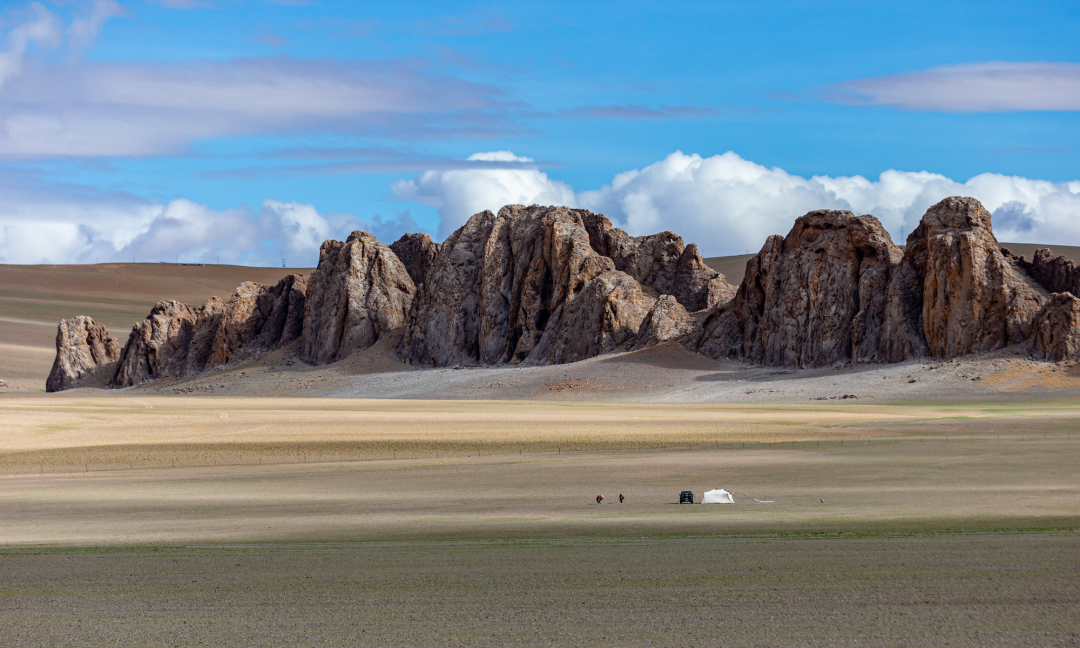
Manasarovar Lake is one of Tibet’s three sacred lakes, hailed as the “Mother of Rivers and King of Sacred Lakes,” standing guard alongside Mount Kailash. It is also regarded as holy by Buddhists, with Xuanzang referring to it as the “Jade Pool of the West” in “The Great Tang Records on the Western Regions.” Pilgrims arrive annually, believing that cleansing in its waters can purify the soul. Starting from the visitor center, one can walk clockwise around the lake to see several monasteries, including Seragli Monastery, Chugu Monastery, and Qiwu Monastery, with stunning sunrise views over Manasarovar from the foot of Qiwu Monastery.
La’ang Co, located just a road separated from Manasarovar Lake, is termed “the lake of demons,” featuring barren land where not even weeds grow. The water here is said to be undrinkable for both humans and animals.
**Guge Kingdom:**
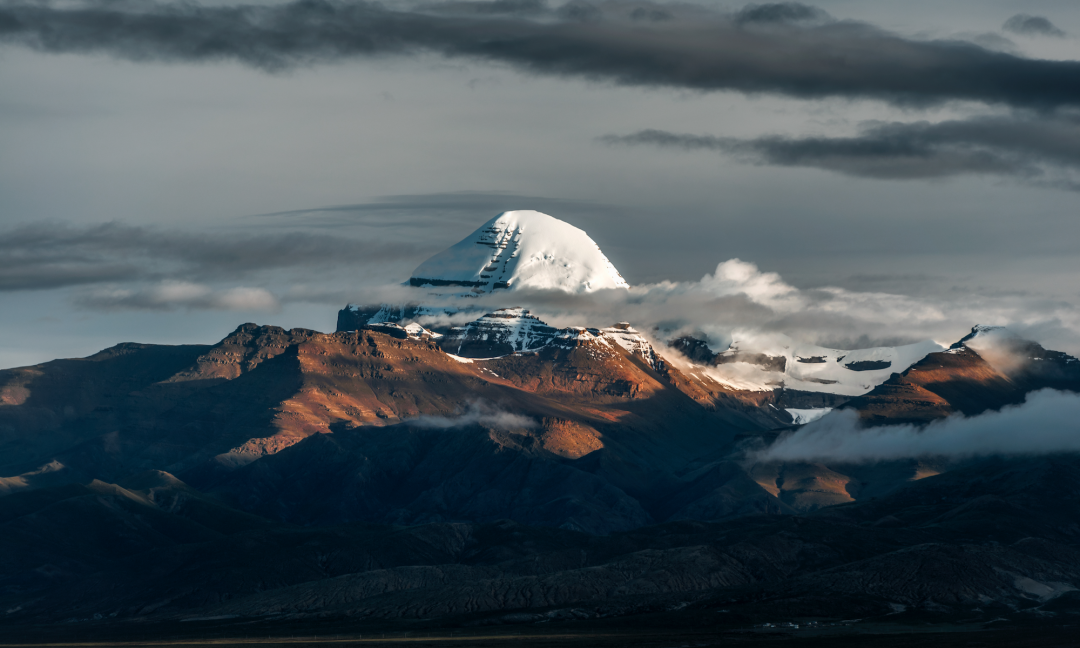
The Guge Kingdom is a lost civilization hidden deep within Ali, which thrived for over 700 years before vanishing. The architectural remains of the Guge Kingdom, including temples such as the Tara Hall, White Palace, Red Palace, and Great Avalokiteshvara Hall, are relatively well-preserved and boast murals that are worth seeing. When visiting, it is recommended to hire a guide to deepen your understanding of this mysterious history.
**Zhada Clay Forest:**
The earthen landscape at Zhada is one of Ali’s wonders; this area was once submerged under a large ocean that transformed into its current “earthen forest” state over prolonged geological changes. When visiting Zhada Clay Forest, don’t miss the Xiayi Valley, which showcases the essence of the site with a beautiful array of colorful earth formations that mesmerize visitors, akin to the Danxia landform. You can also climb to the viewing platform for breathtaking views of distant snowy mountains and the layered earthen forest, an imposing sight to behold.
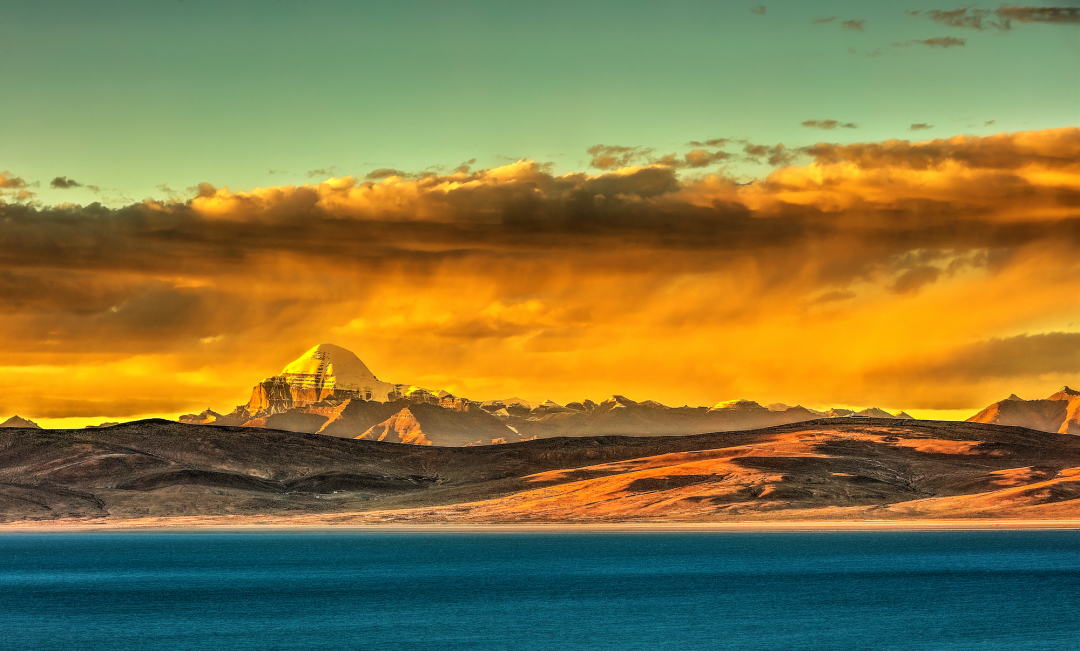
**Bangong Lake:**
💰 Free admission under the “Winter Tourism in Tibet” policy.
Known in Tibetan as “Cuomulang La Renbo,” Bangong Lake translates to “bright, long lake.” Straddling the border in the Dayu County area, two-thirds of the lake is in Ali and one-third in India. Interestingly, while the lakes within China are freshwater and abundant in grass, those in India are saline and barren. It is also the world’s longest rift lake, with some narrow sections measuring only a few kilometers. Upon reaching Bangong Lake, the scenery contrasts the arid landscapes of Ali, brimming with pastures, herds of cattle and sheep, and abundant waterfowl.
**Tashilhunpo Monastery:**
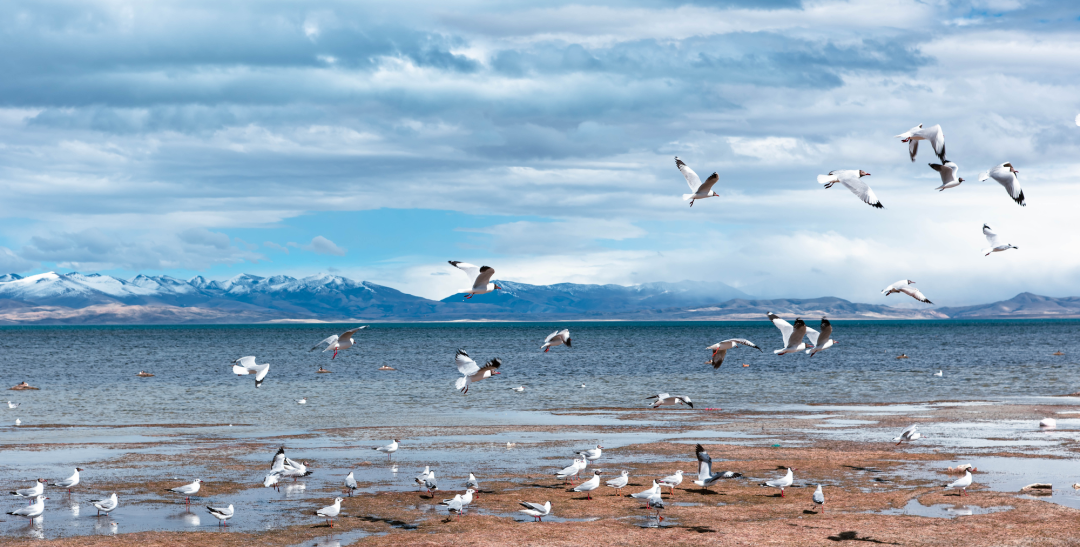
It is one of the “Six Great Monasteries” of the Gelug school of Tibetan Buddhism and is the largest monastery in the Shigatse region, rivaling Potala Palace in grandeur. The monastery’s treasure is the “Buddha Shakyamuni” statue enshrined here, located right within the city of Shigatse—this should not be missed.
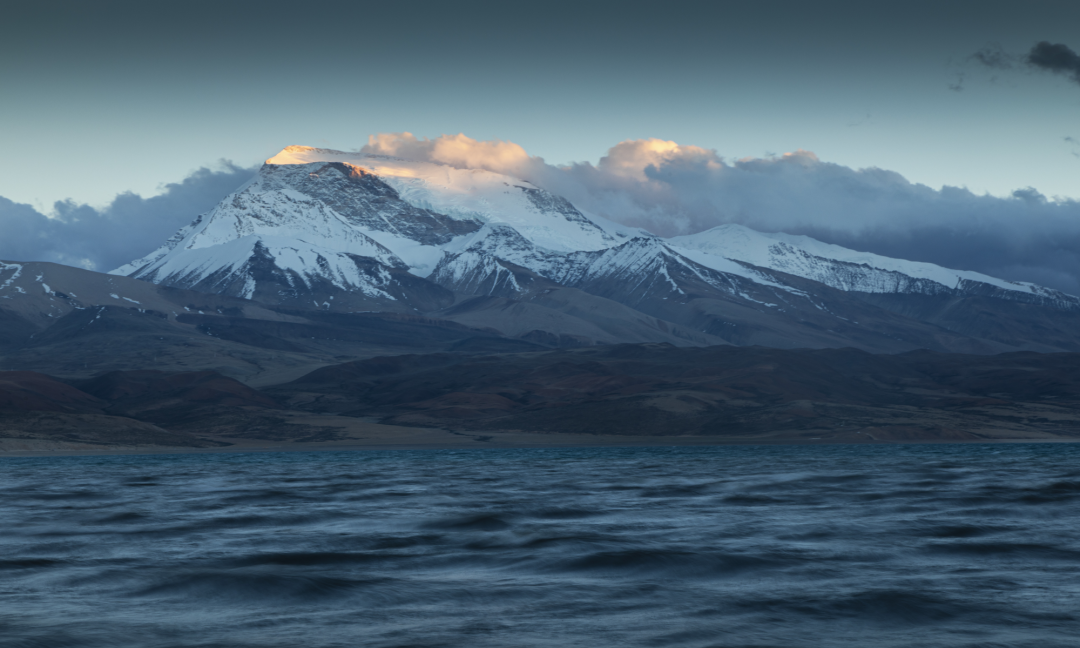
For a reference of the Ali Great Circuit (including Mount Kailash circumambulation):
D1: Lhasa – Yamdrok Lake – Karola Glacier – Jiangzi Fortress – Shigatse
D2: Shigatse – Tashilhunpo Monastery – Gyatso La Pass – Everest Base Camp
D3: Everest Base Camp – Dingri – Peiku Lake – Shishapangma – Saga – Zhongba
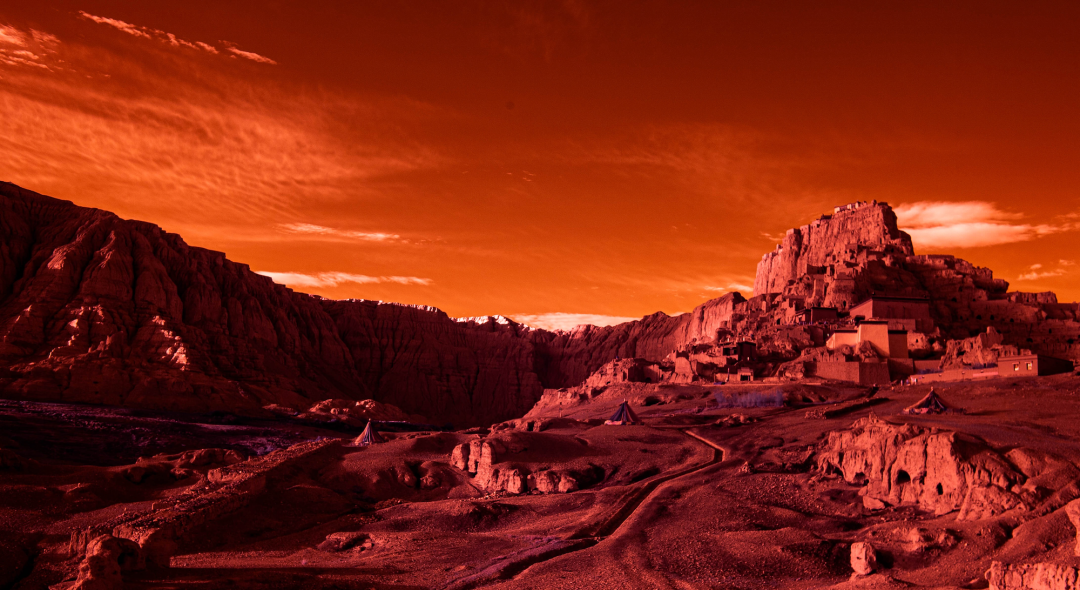
D4: Zhongba – Payang – Manasarovar Lake – La’ang Co – Darchen
D5-6: Kora around Mount Kailash
D7: Darchen – Guge Kingdom – Toling Monastery – Zhada
D8: Zhada – Dongga Pijia – Xiayi Valley – Shiqian River
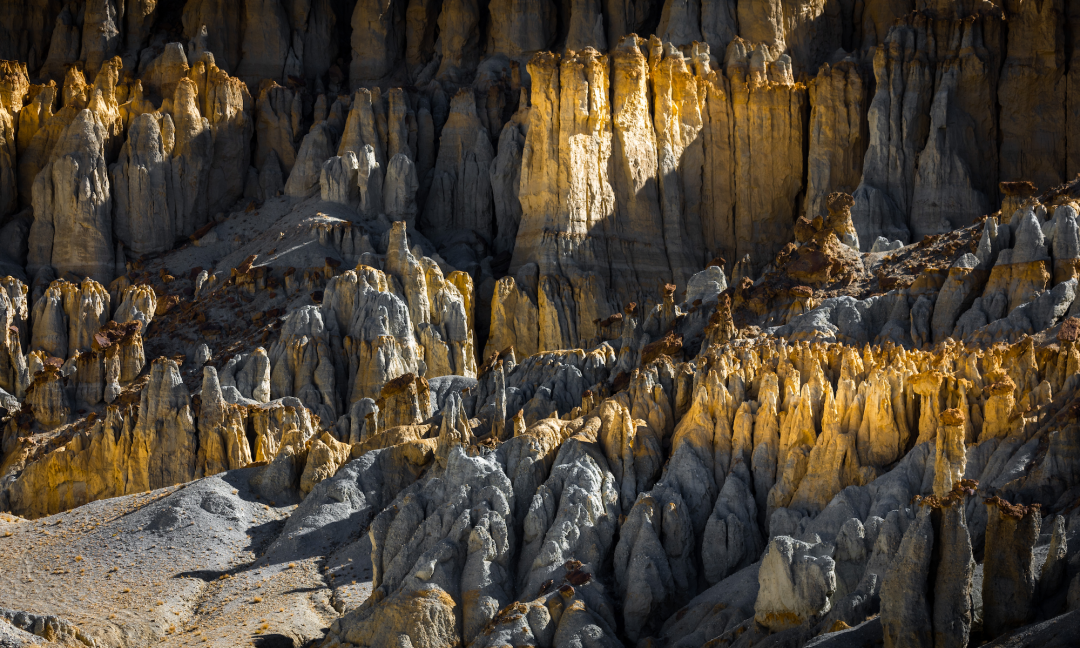
D9: Shiqian River – Yarexiang – Northern Tibetan Prairie – Rendu Township
D10: Rendu Township – Angla Lake – Zhabuye Tea Lake – Cuqian
D11: Cuqian – Zhadin Namucuo – Dangreyongcuo – Wenvuin
D12: Wenvuin – Tangqiong Lake – Daze Lake – Selinco Lake – Banggo
D13: Banggo – Namtso Lake – Lhasa
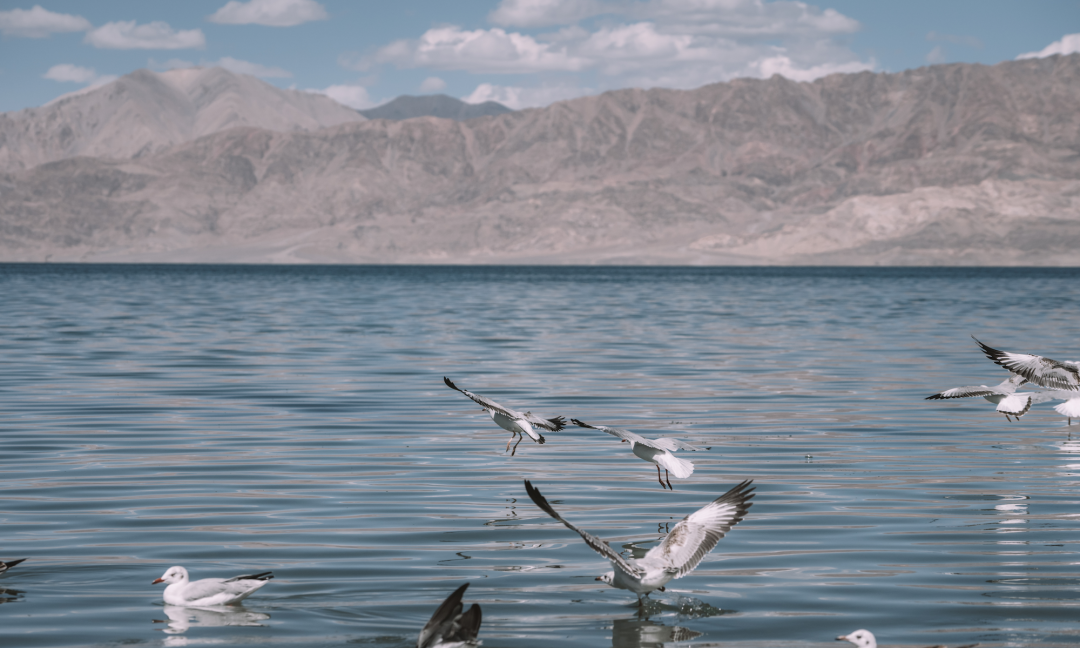
For those with limited holidays, a conventional route over about eight days could look like this (traveling from Lhasa to Everest and then back to Lhasa):
D1: Lhasa – Yamdrok Lake – Karola Glacier – Shigatse
D2: Shigatse – Dingri – Gyatso La Pass – Everest Base Camp
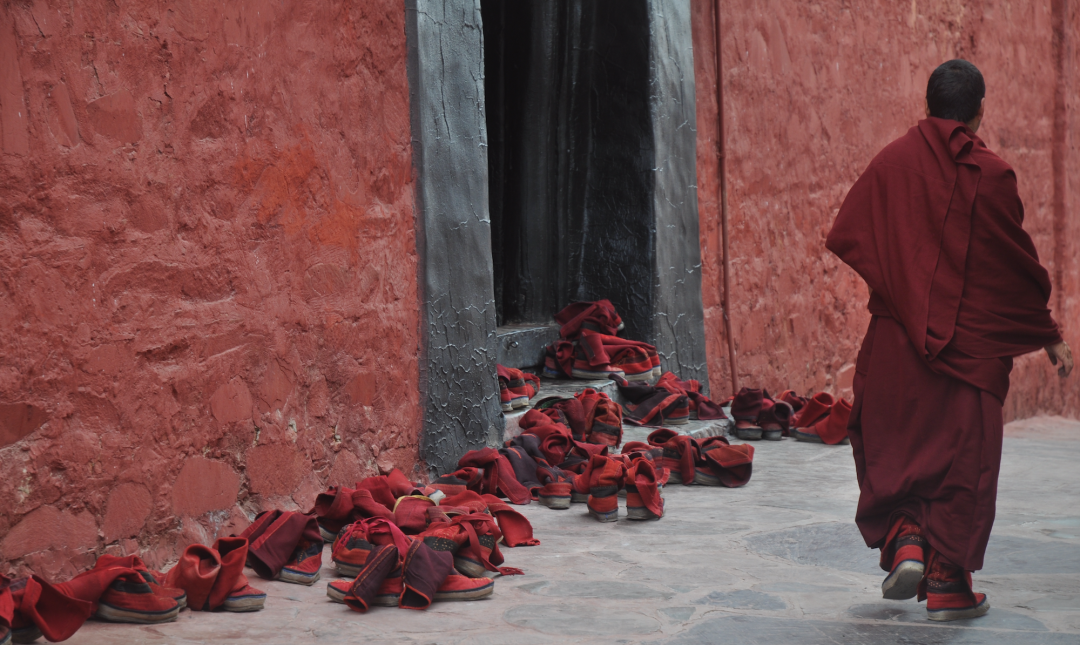
D3: Everest Base Camp – Dingri – Peiku Lake – Shishapangma – Saga
D4: Saga – Zhongba – Hoer – Manasarovar Lake – Mount Kailash – Darchen
D5: Darchen – La’ang Co – Zhada Clay Forest – Guge Kingdom – Zhada
D6: Zhada – Darchen – Saga
D7: Saga – Lazi – Shigatse
D8: Shigatse – Lhasa
**Travel Tips for Visiting Tibet:**
**On Altitude Sickness:**
1. Prepare some altitude sickness medications in advance, like “Highland Peace” and glucose. You might also want to start consuming local foods like butter tea and yak meat upon your arrival, as local elders suggest these help in acclimatization.
2. On the first day in Tibet, avoid showering or washing your hair to help your body adapt to the altitude. If it’s your first visit, acclimatize for 2-3 days in Lhasa or Nyingchi before gradually increasing altitude in your itinerary to see glaciers and mountains.
3. If feeling unwell or exhibiting cold symptoms, do not ascend to high altitudes forcefully, as it is considered dangerous.
**On Traveling:**
1. Always carry your ID, as many attractions in Lhasa require ID checks for entry.
2. If you plan to explore glaciers, consider preparing crampons in advance.
3. Carry some small bills, as some restrooms may require a fee.
4. The sun is quite harsh at high altitudes; wearing sunglasses when outdoors is recommended.
**Recommended Reading and Documentaries Before Entering Tibet:**
– Documentary: “A Thousand Years on the Path of Bodhi”
– Documentary: “Jokhang Temple and Small Jokhang Temple”
– Documentary: “Potala Palace”
– Documentary: “The Third Pole”
– Documentary: “Tibet”
– Film: “Kailash”
– Book: “Tibet: A Biography of Life and Death”
– Book: “The Fall of the Lama Kingdom”
– Book: “The Tibet Book”
Most importantly, winter trips to Tibet not only offer stunning visuals of the snow-covered plateau but are also very economical. Even during the Spring Festival travel rush, flight and hotel prices remain at off-peak rates. I can show you some samples of flight prices from Chongqing to Lhasa and hotel prices in Lhasa, which are quite affordable, plus many attractions are free of charge—making a trip during the Spring Festival incredibly cost-effective.


